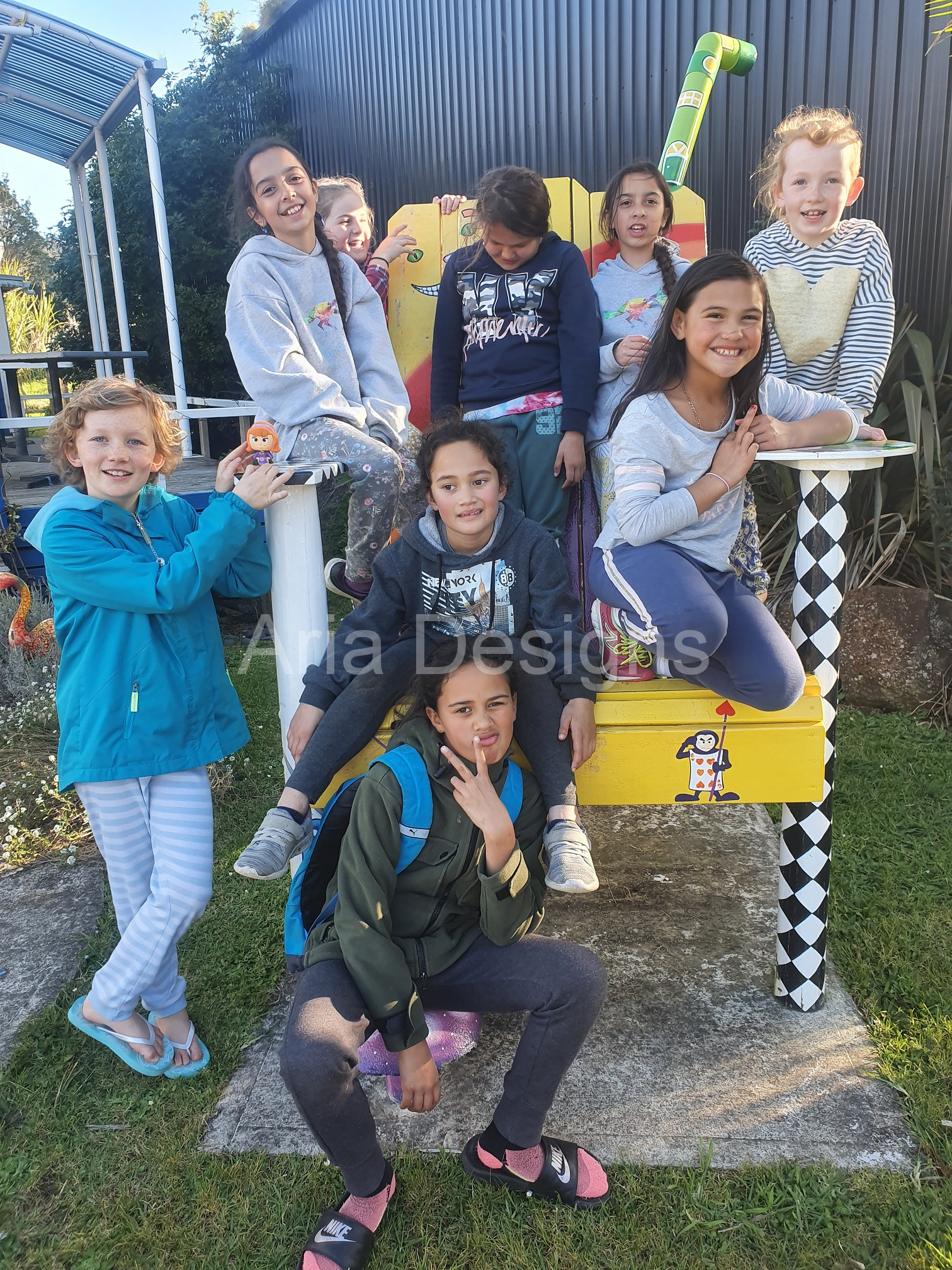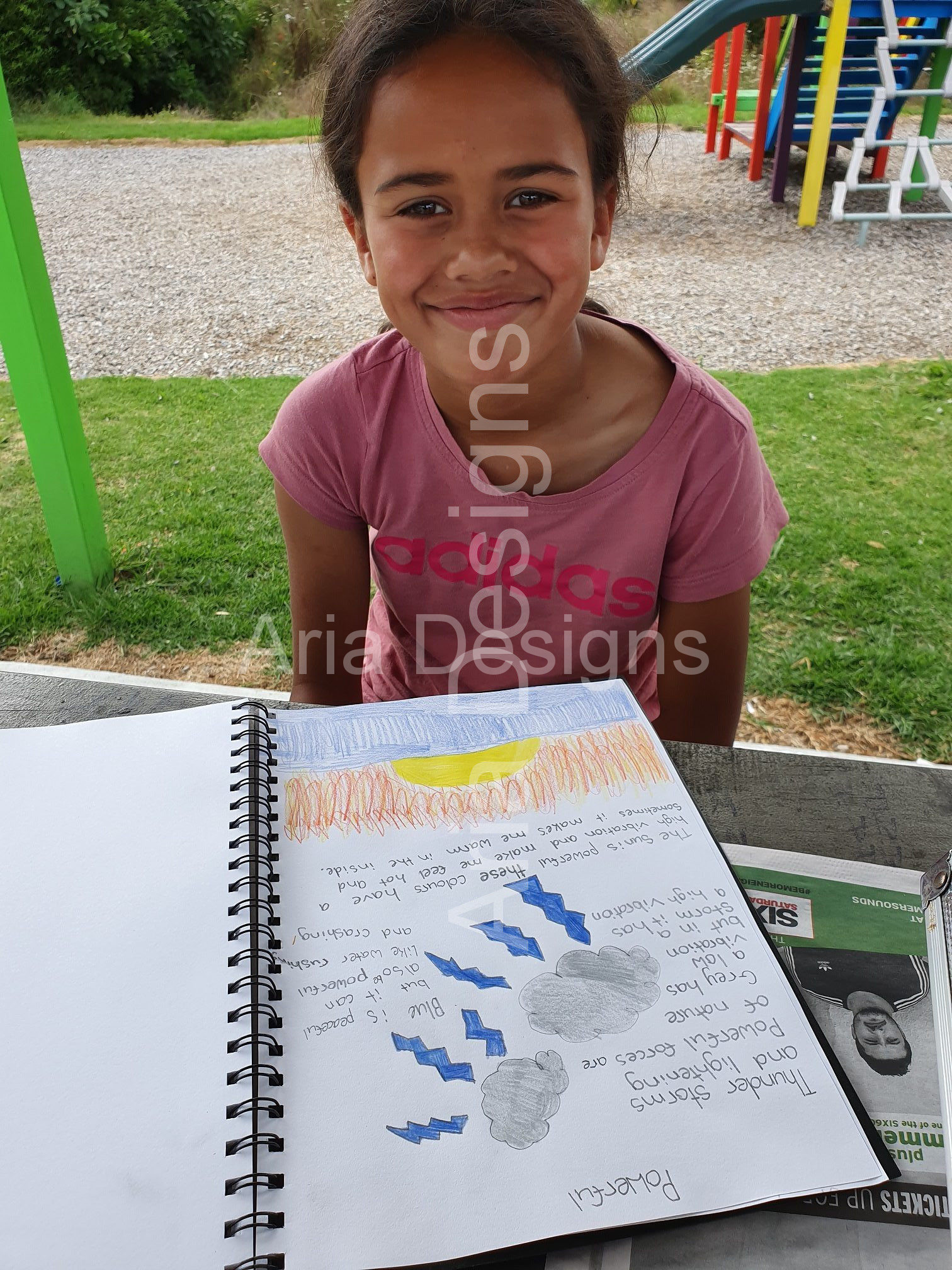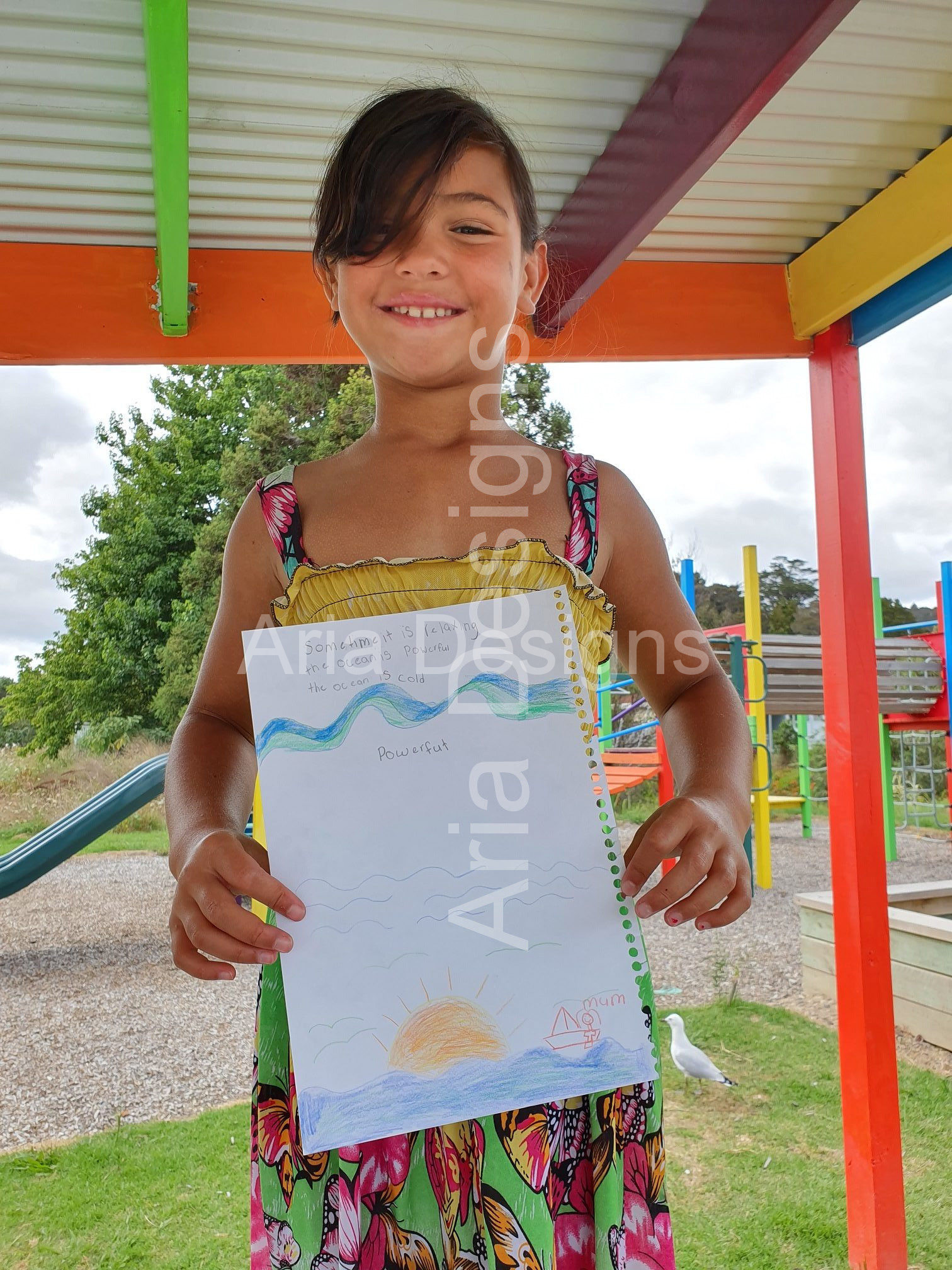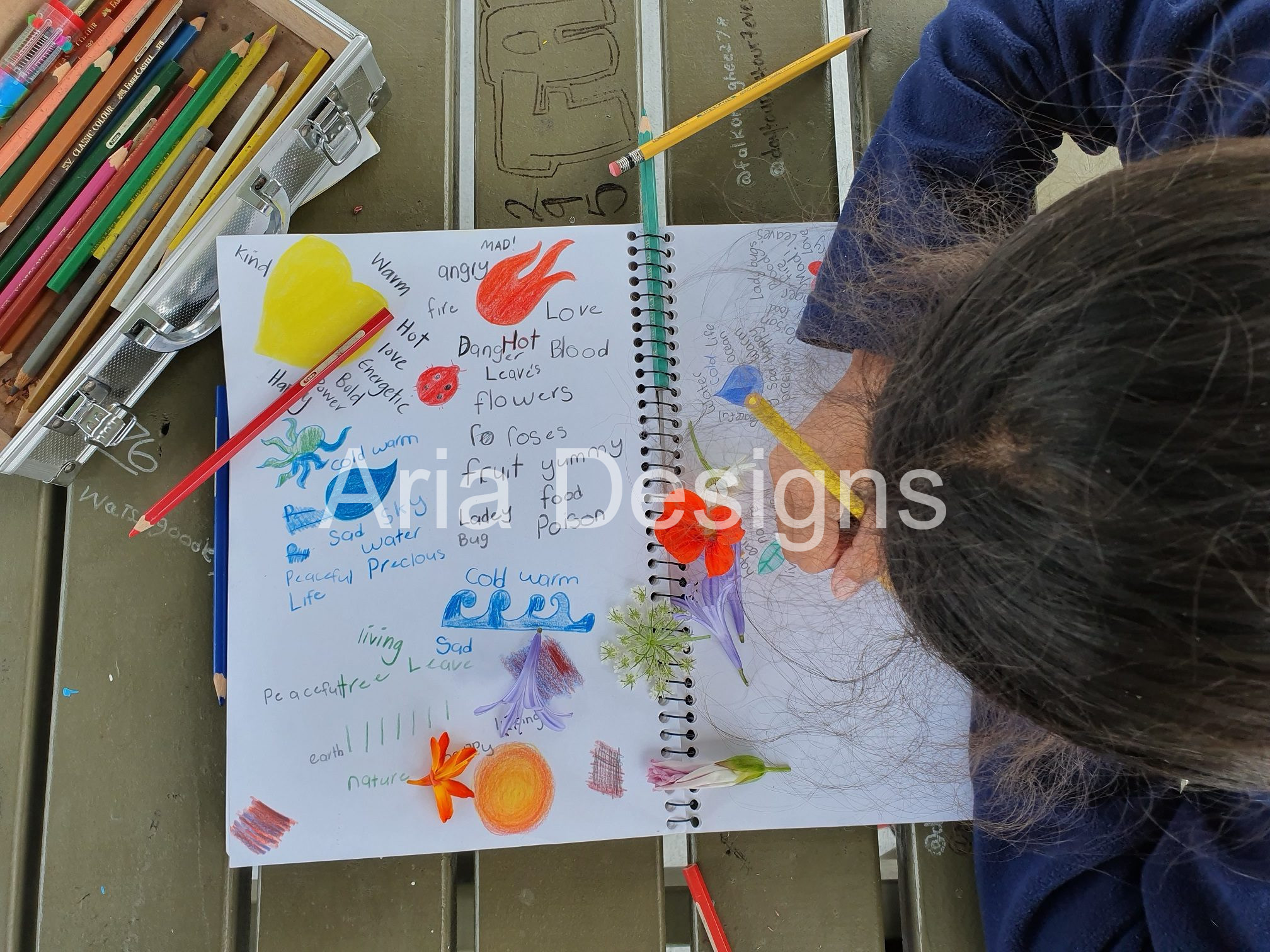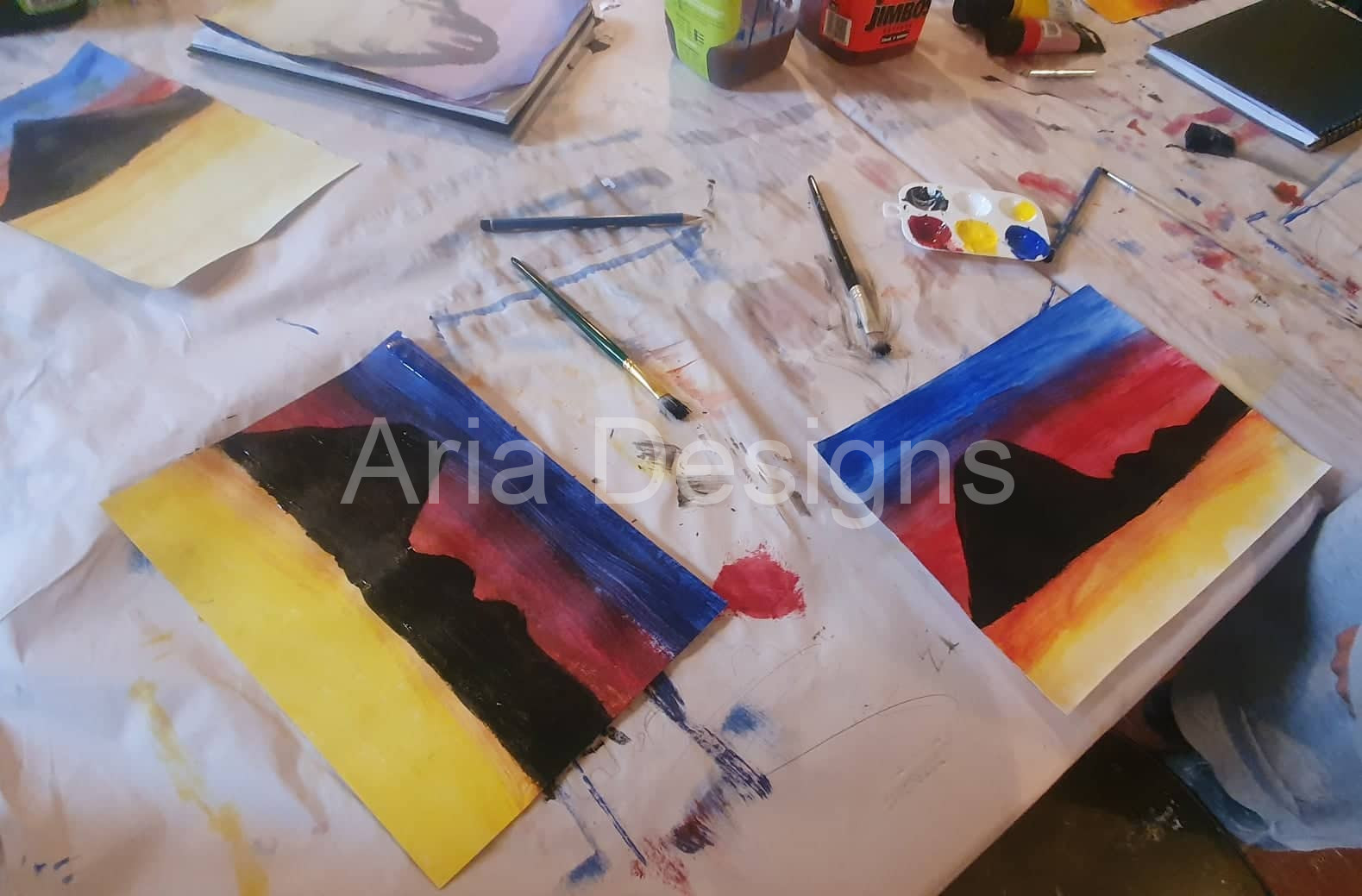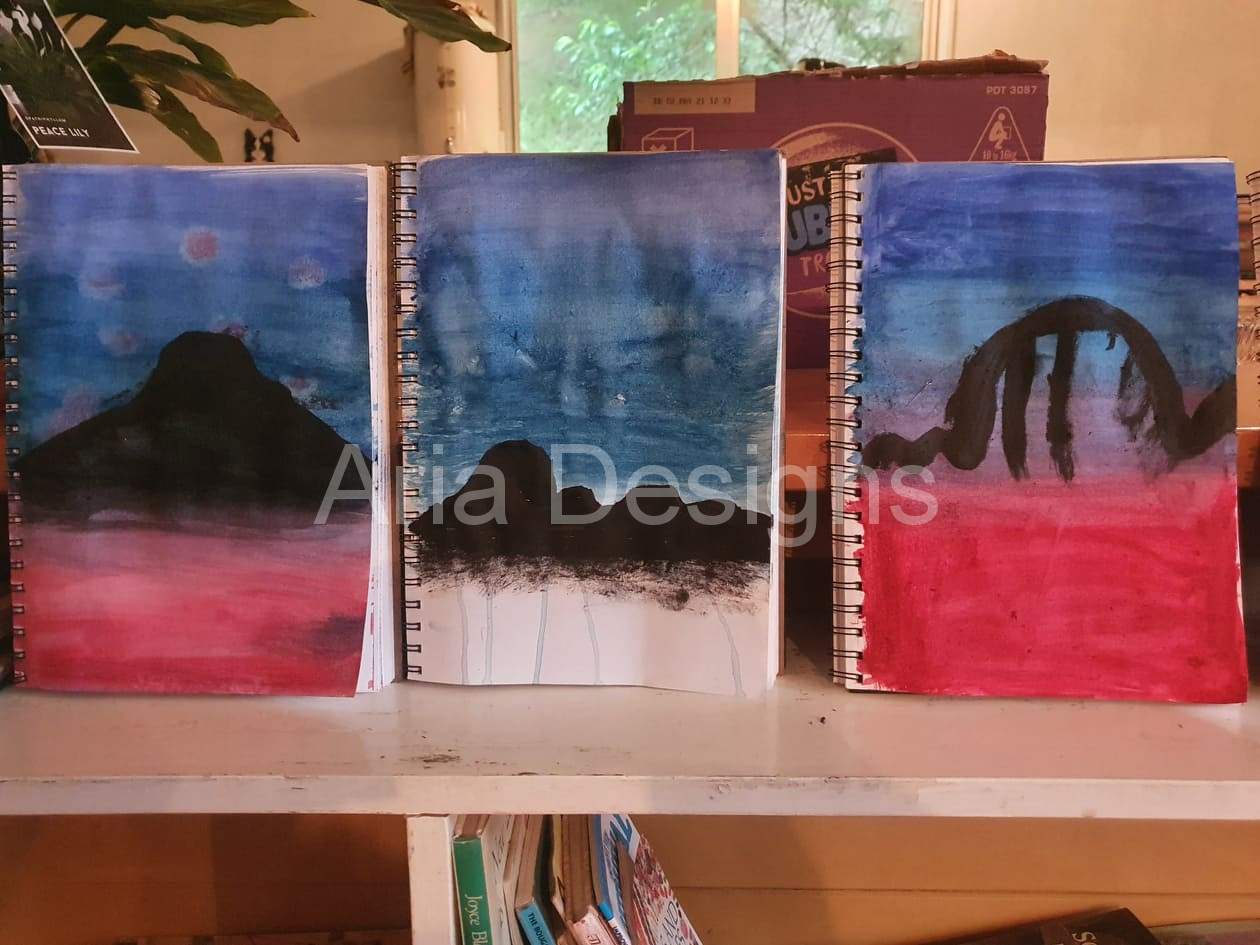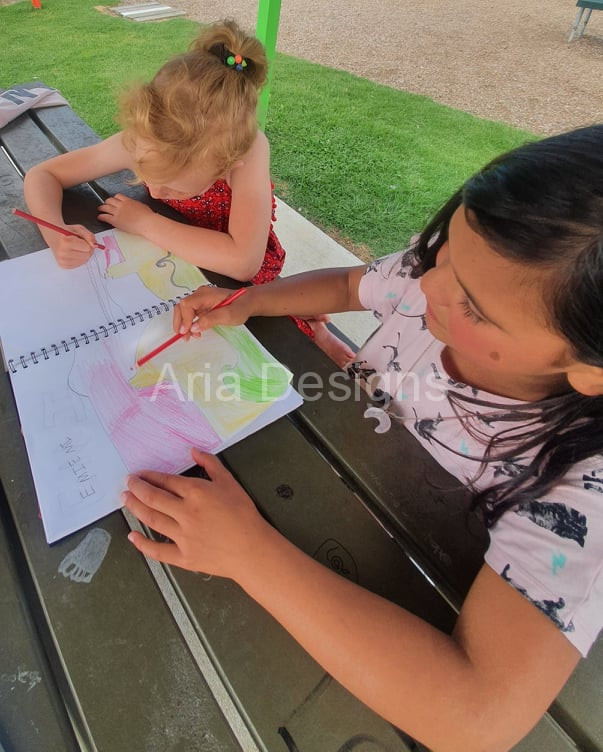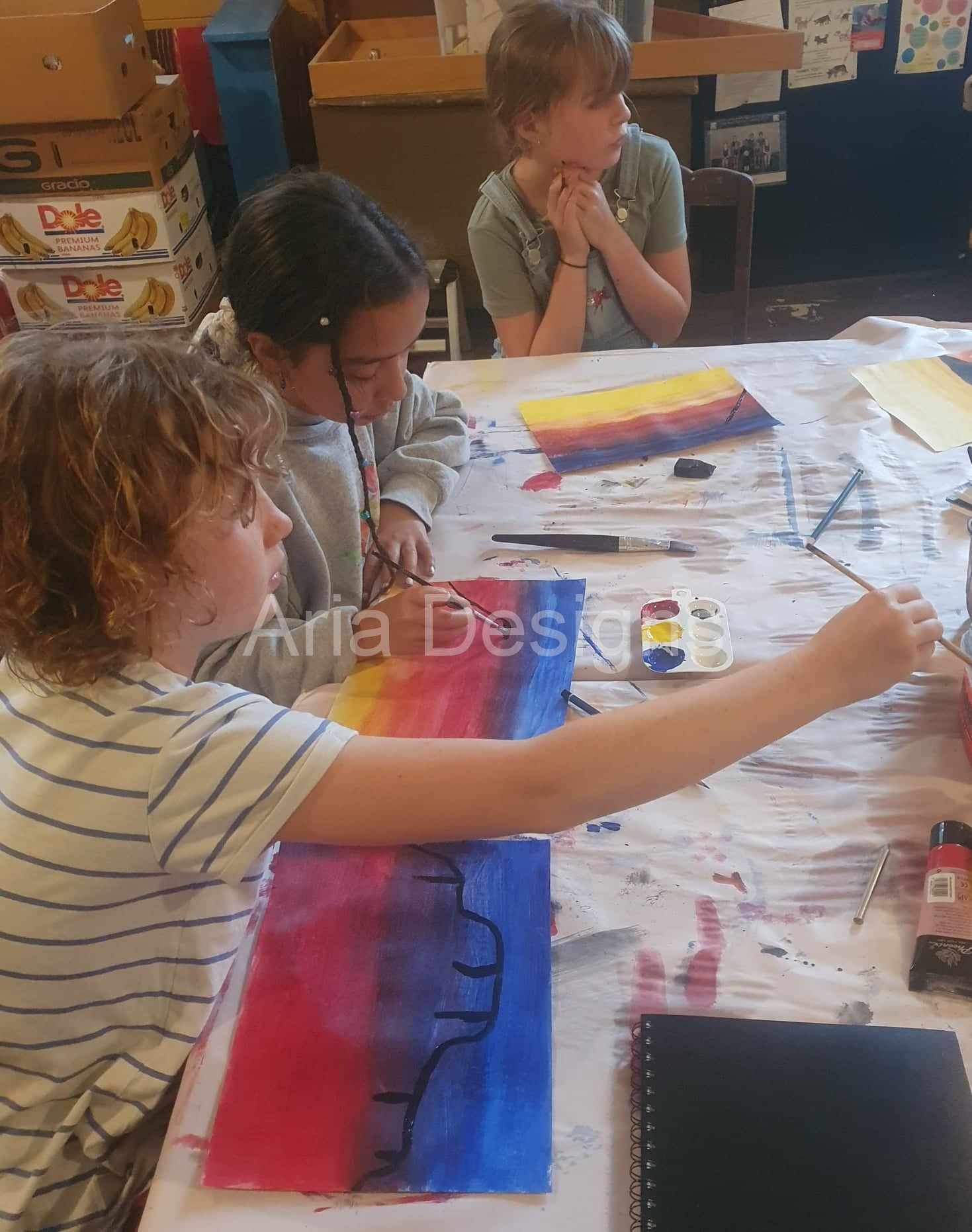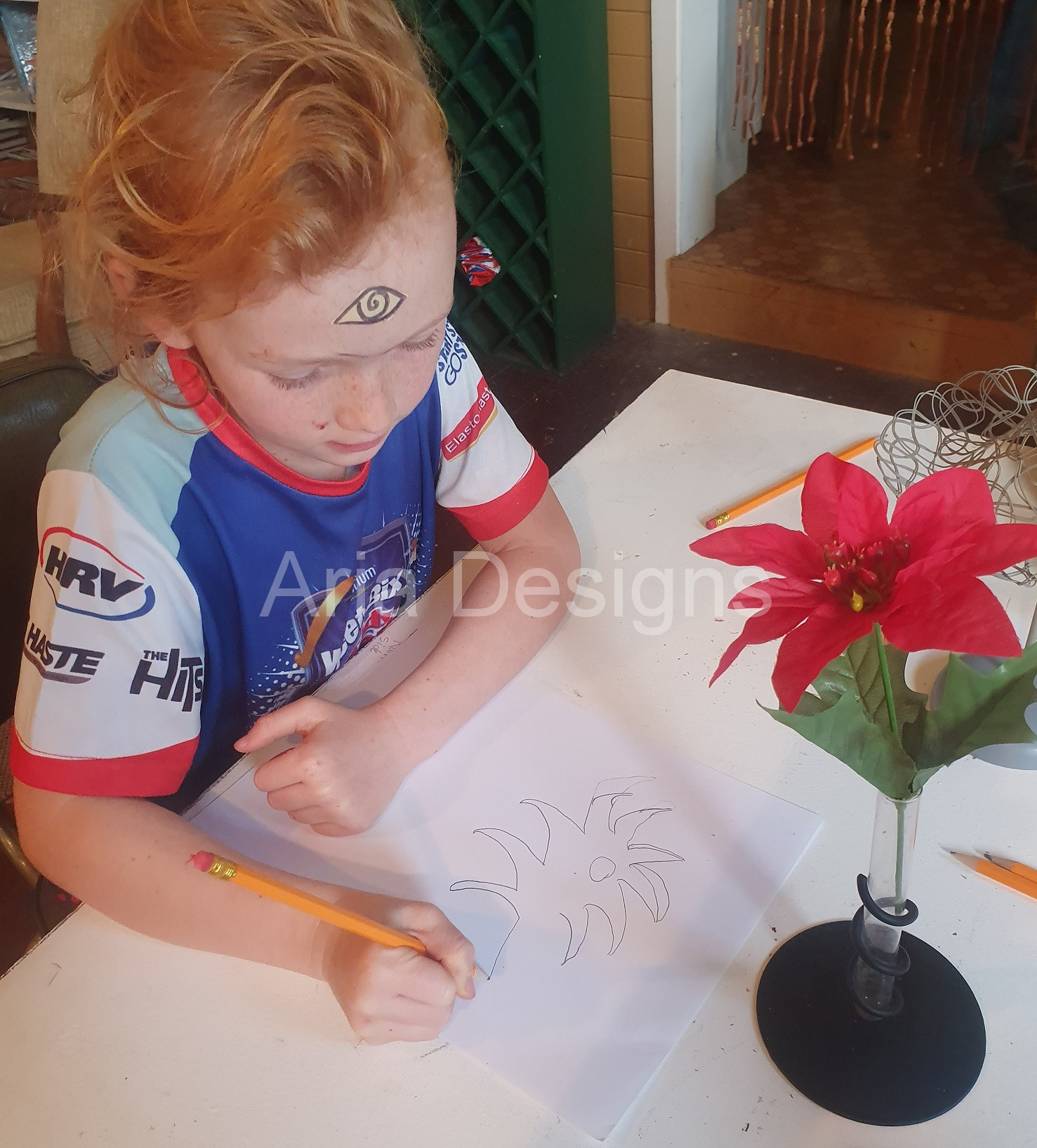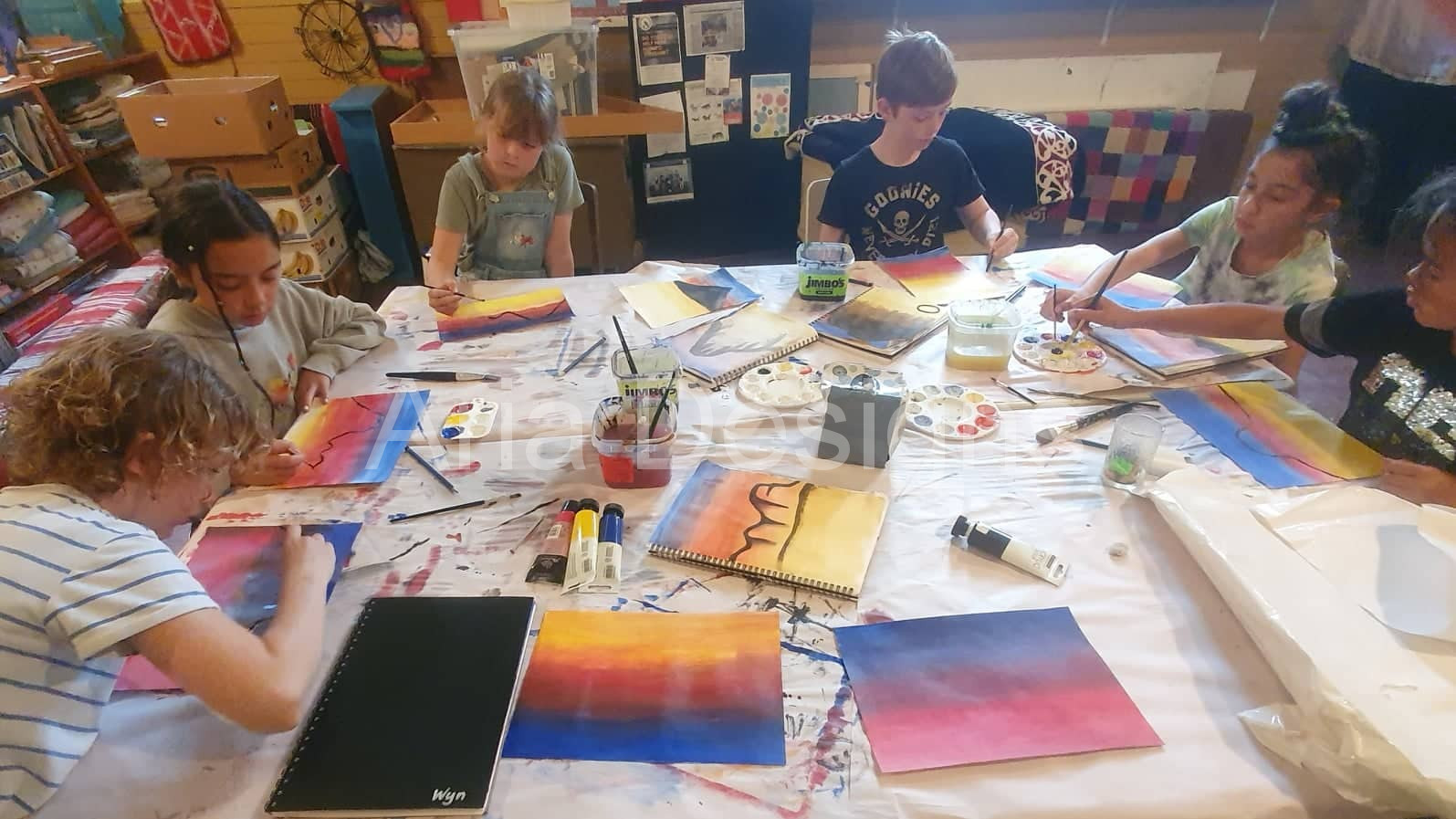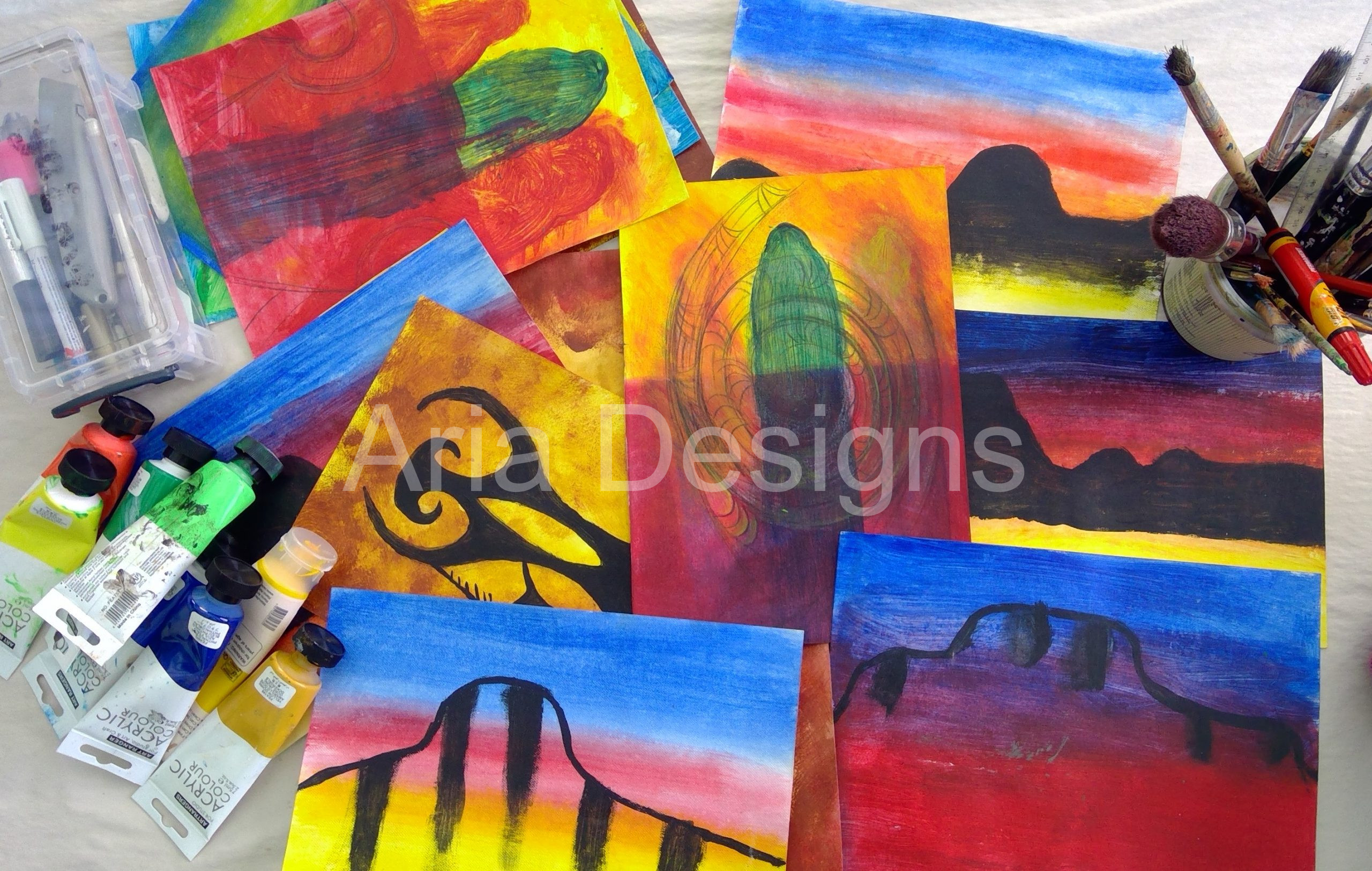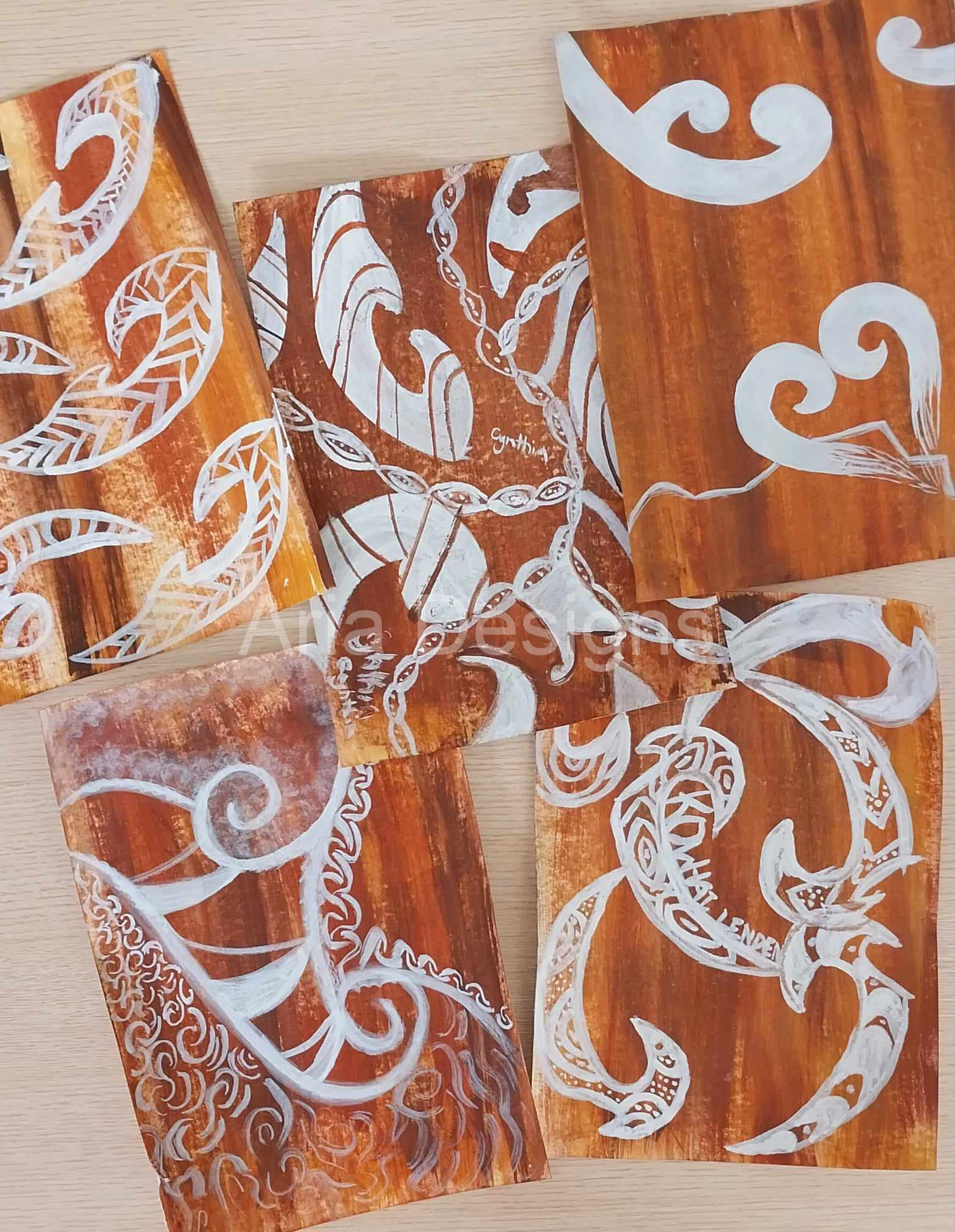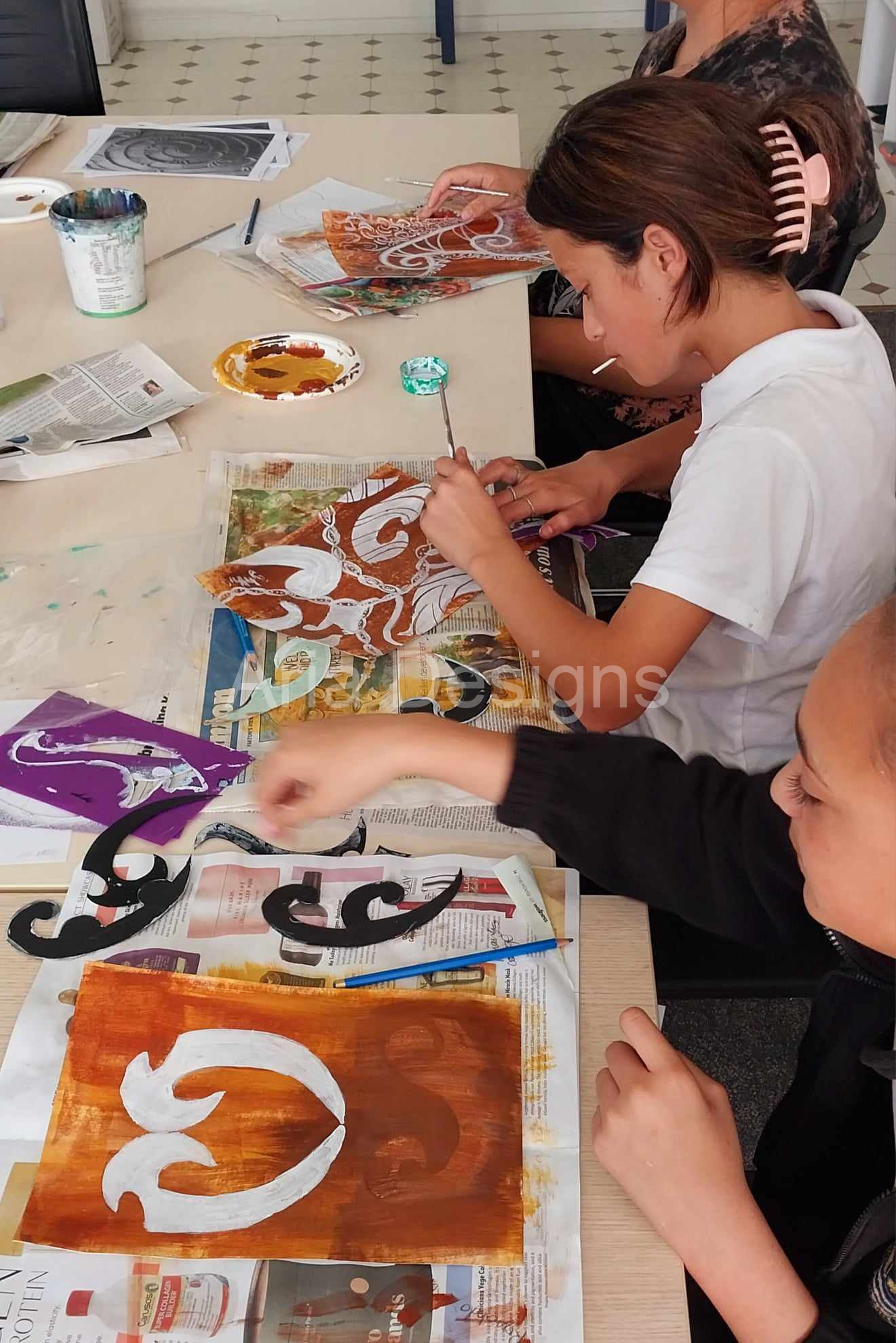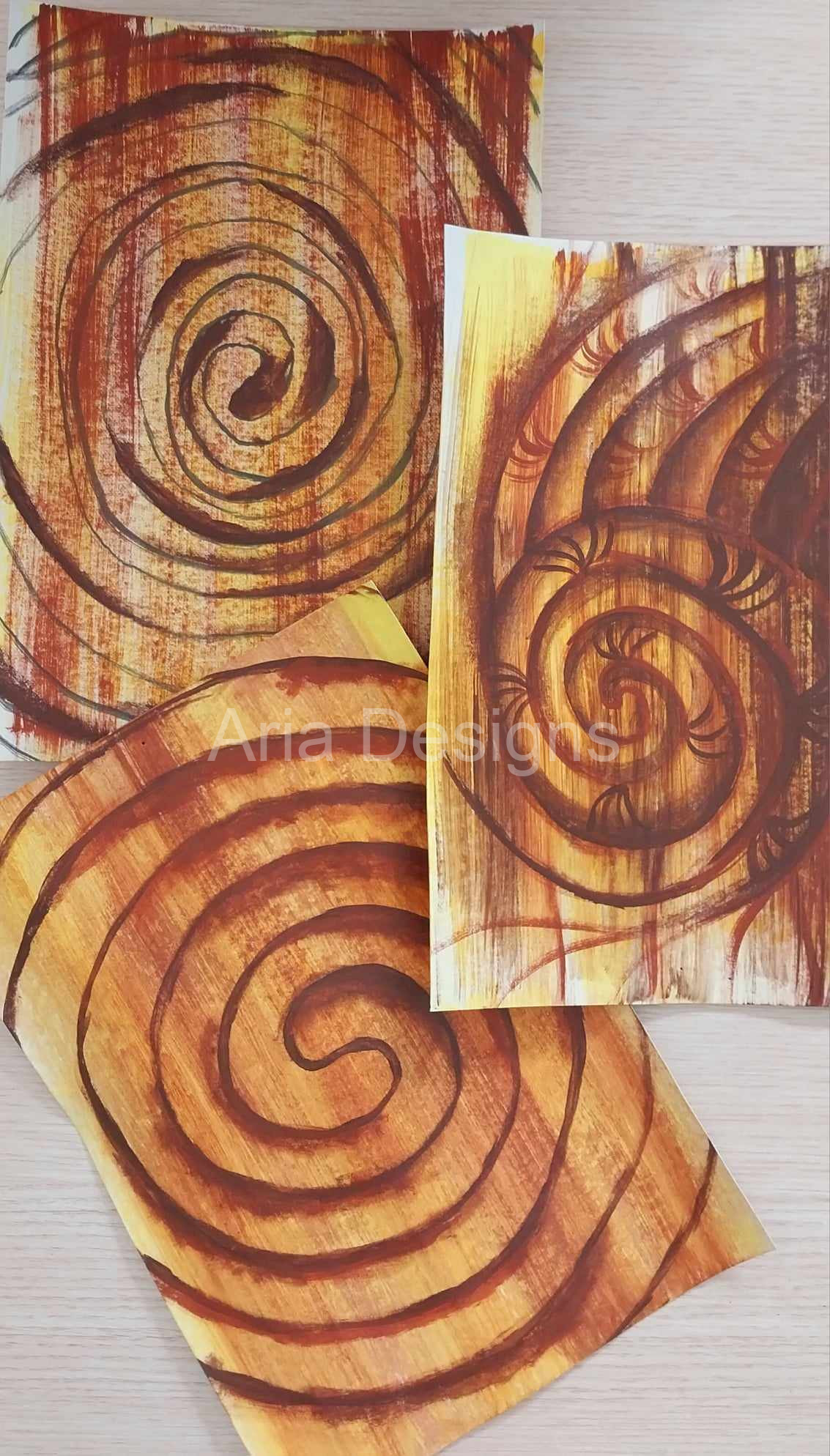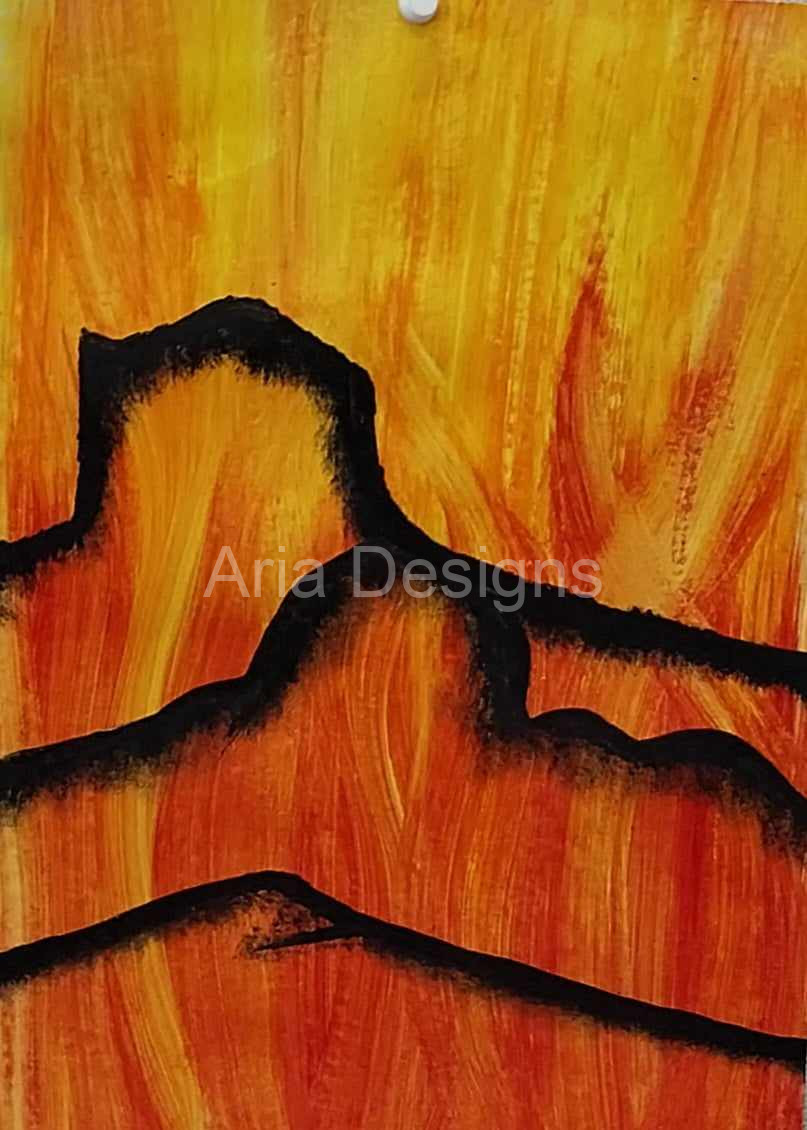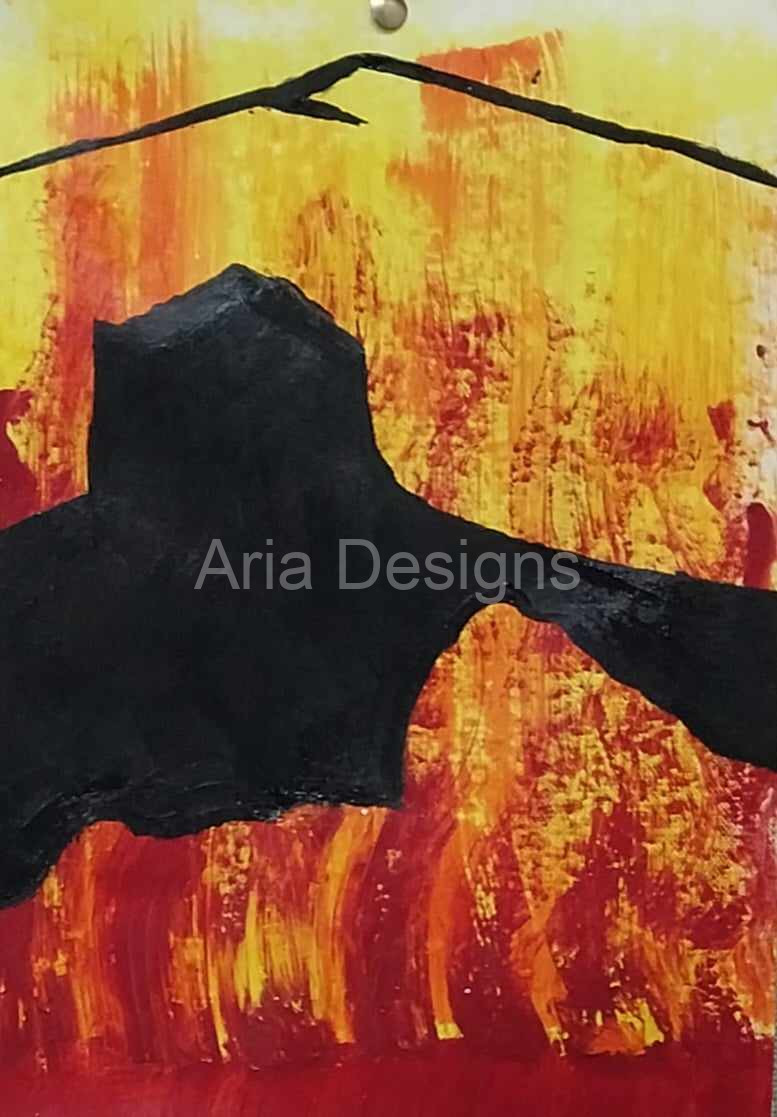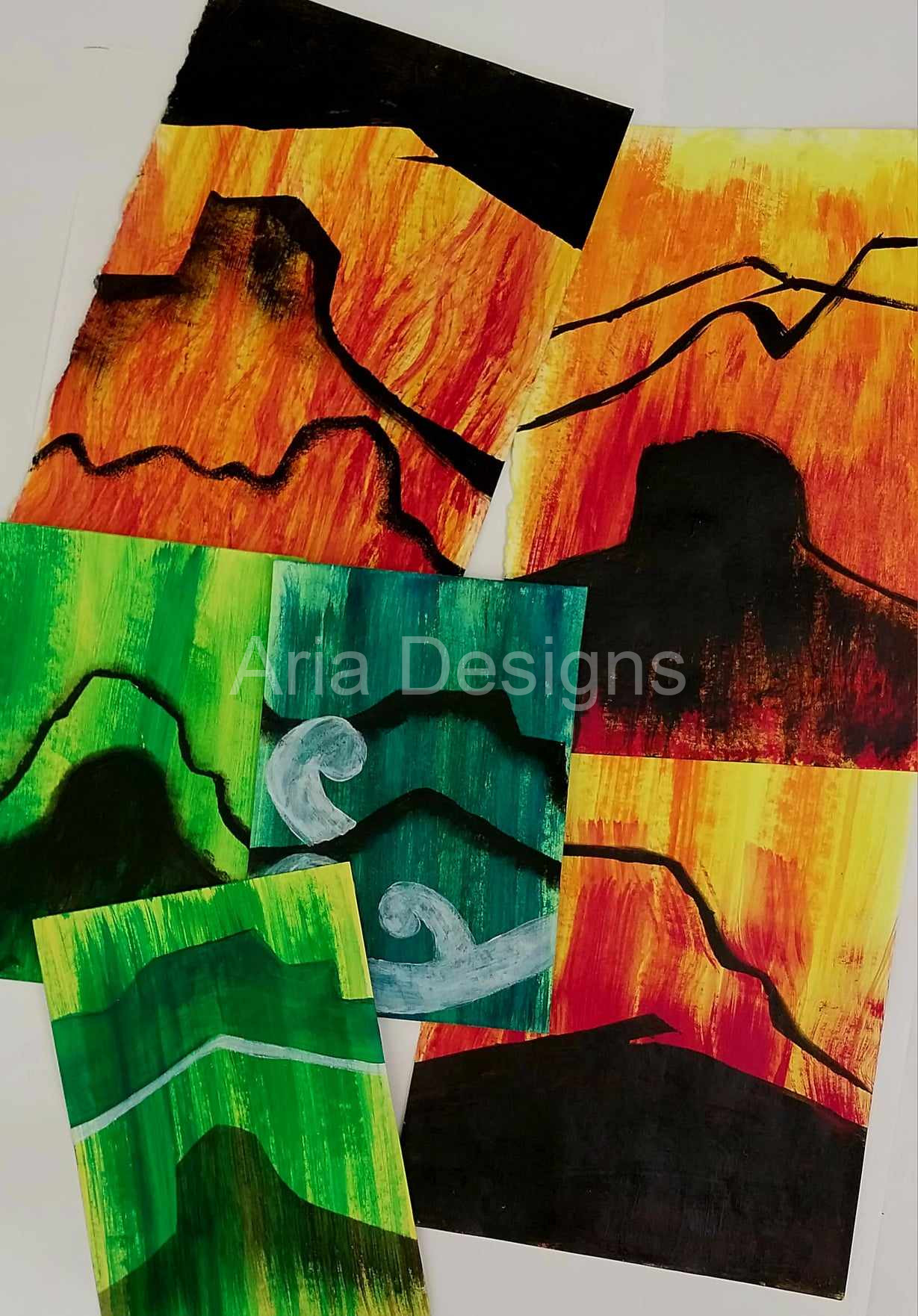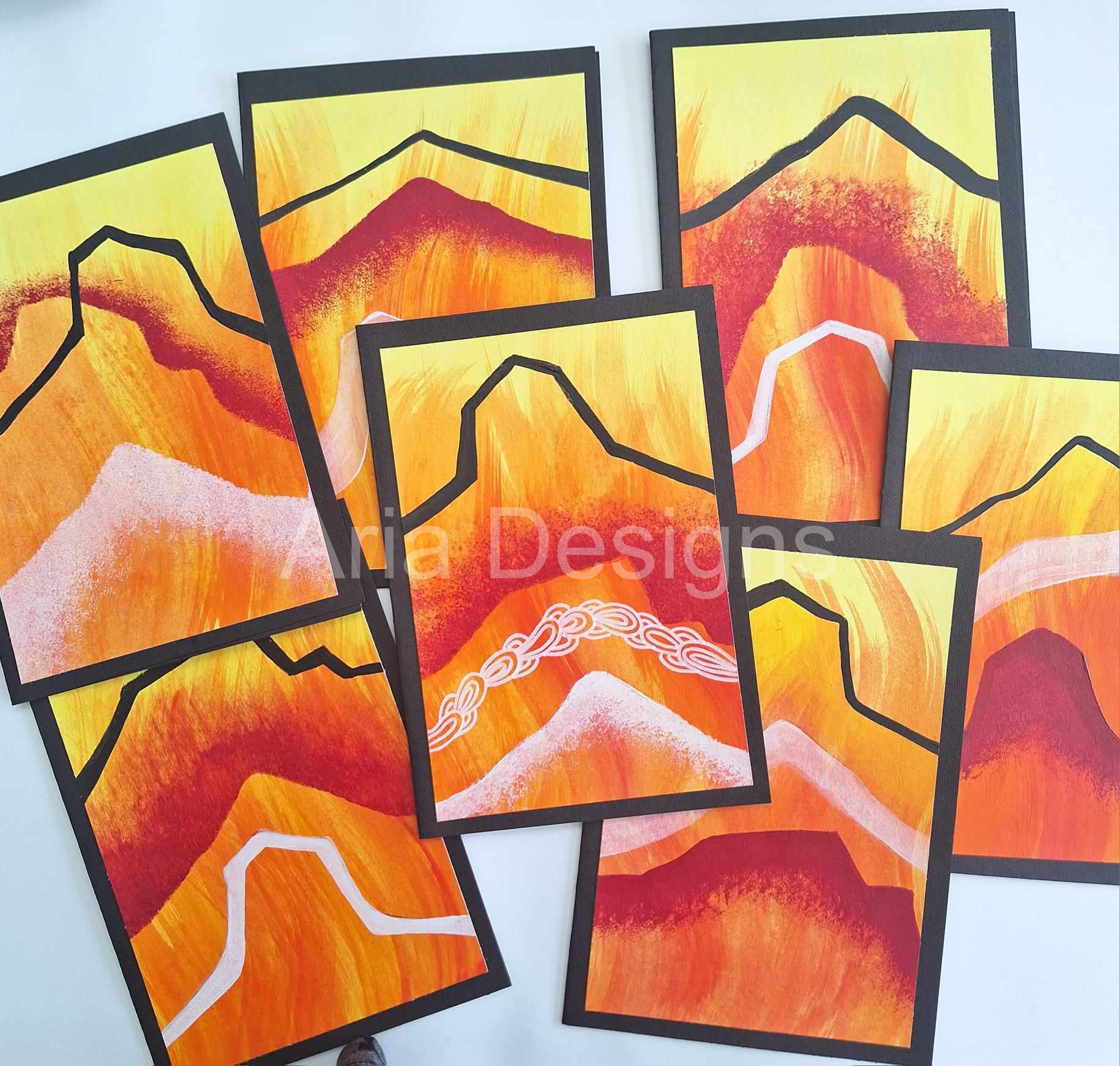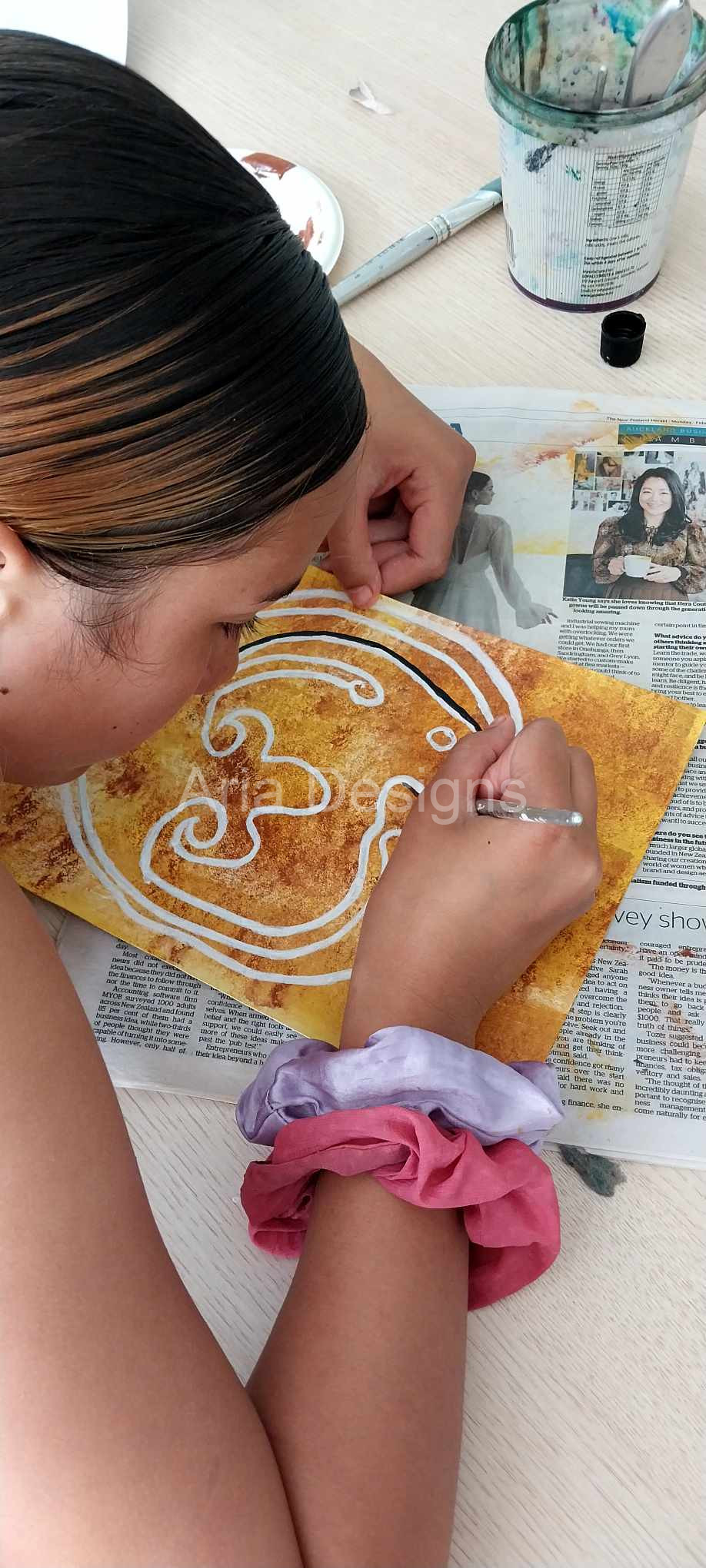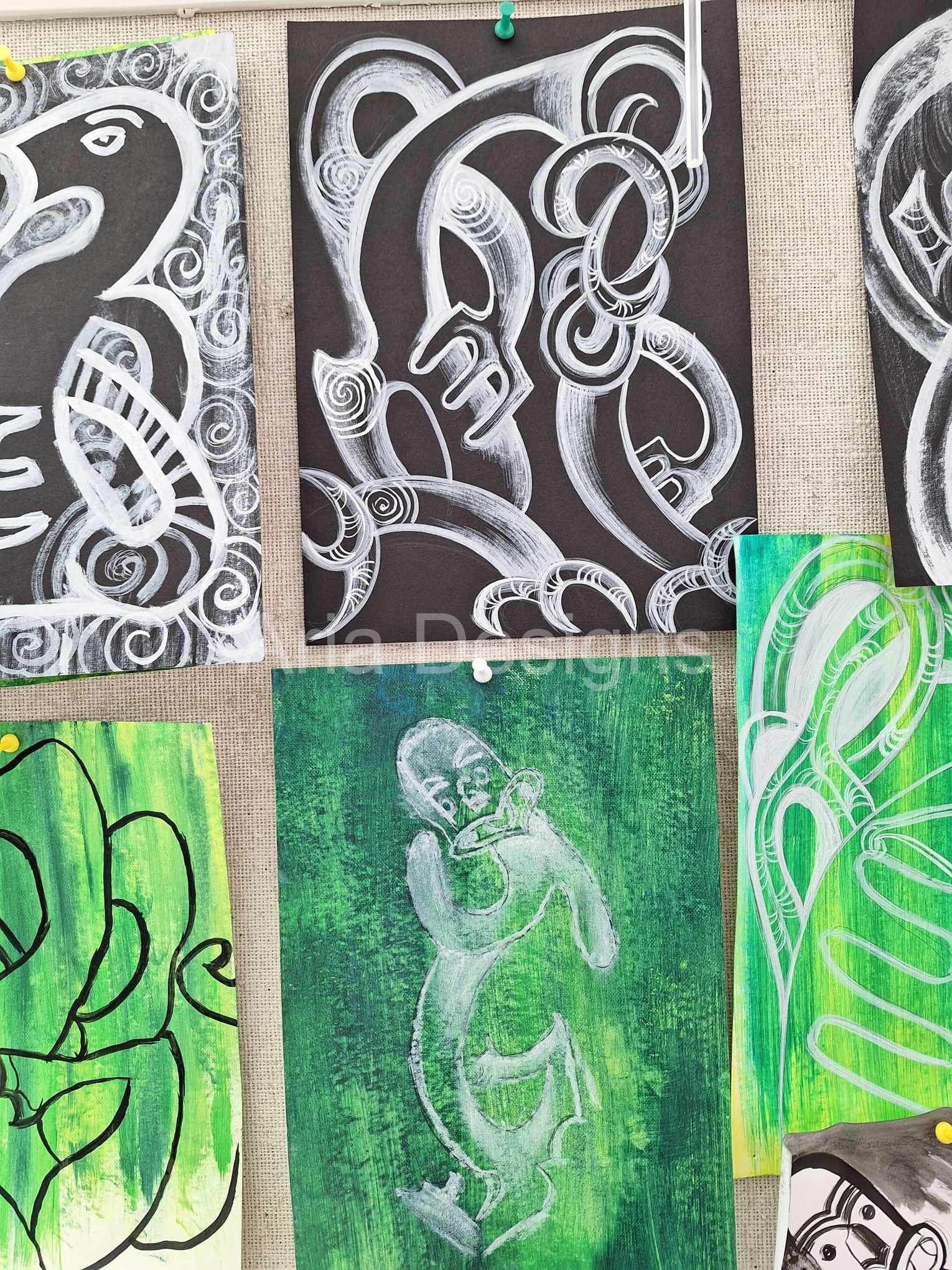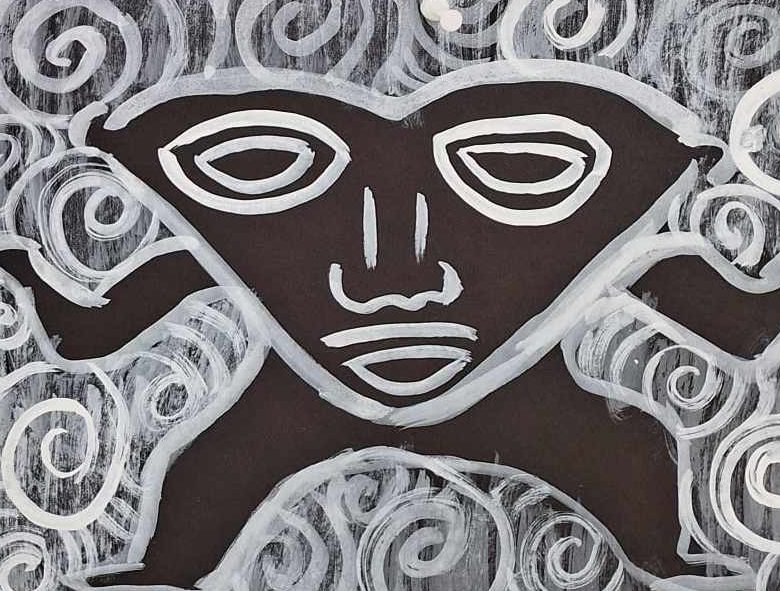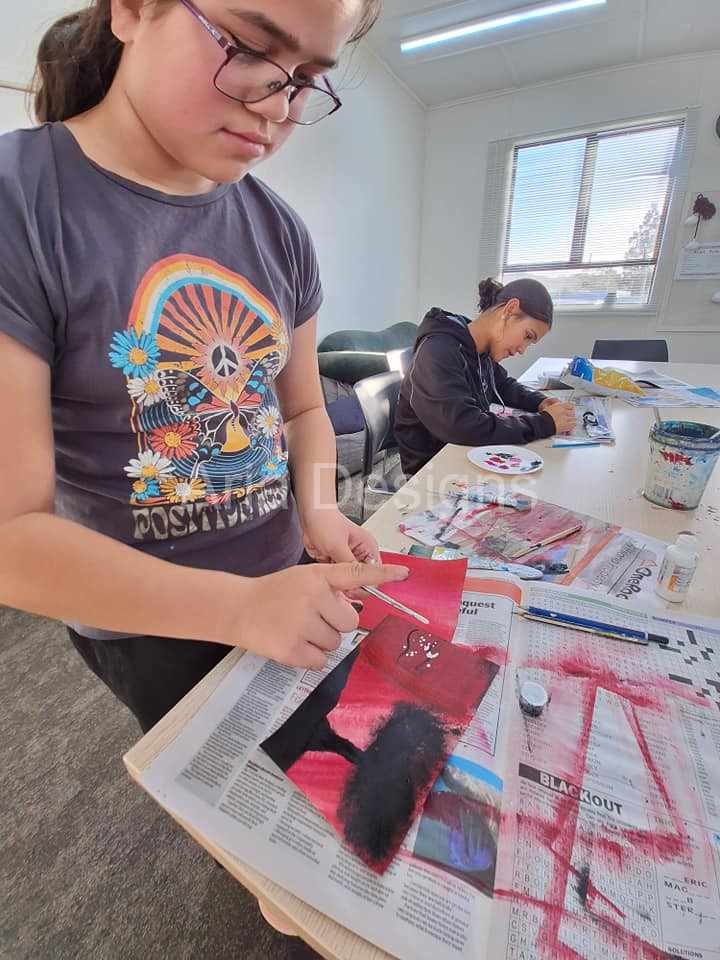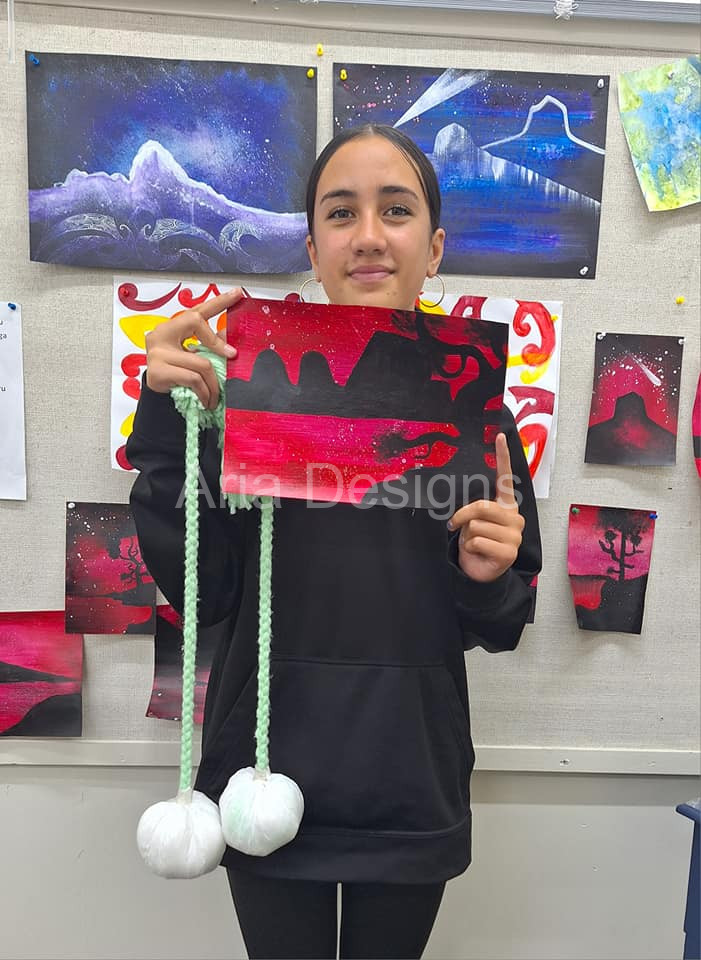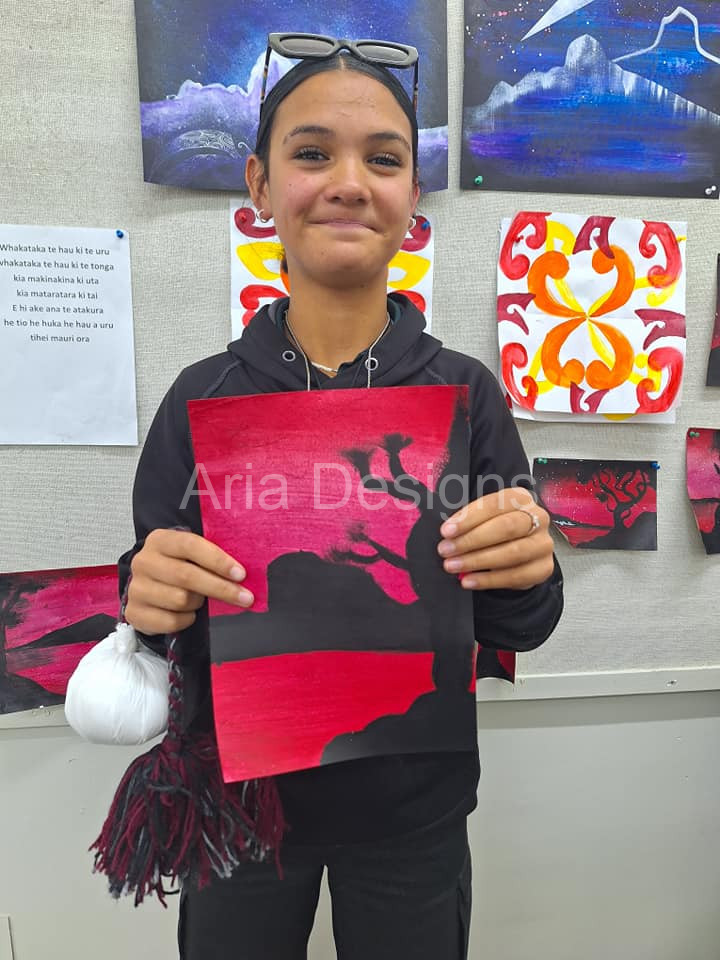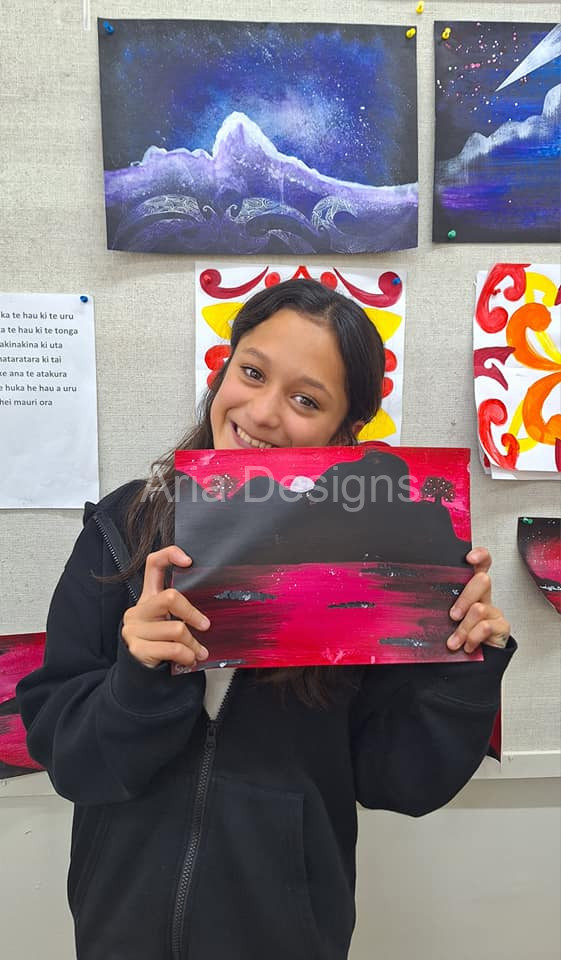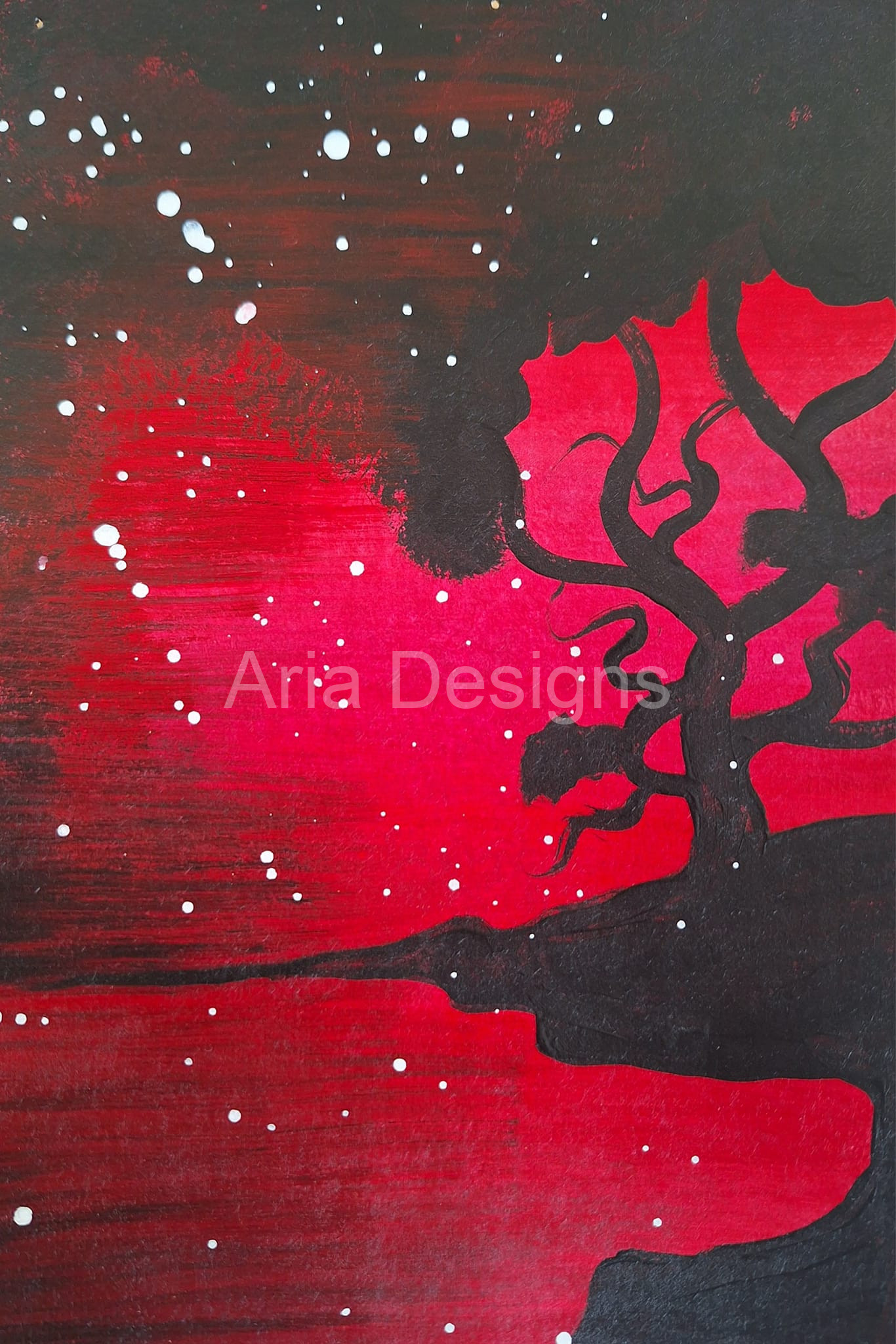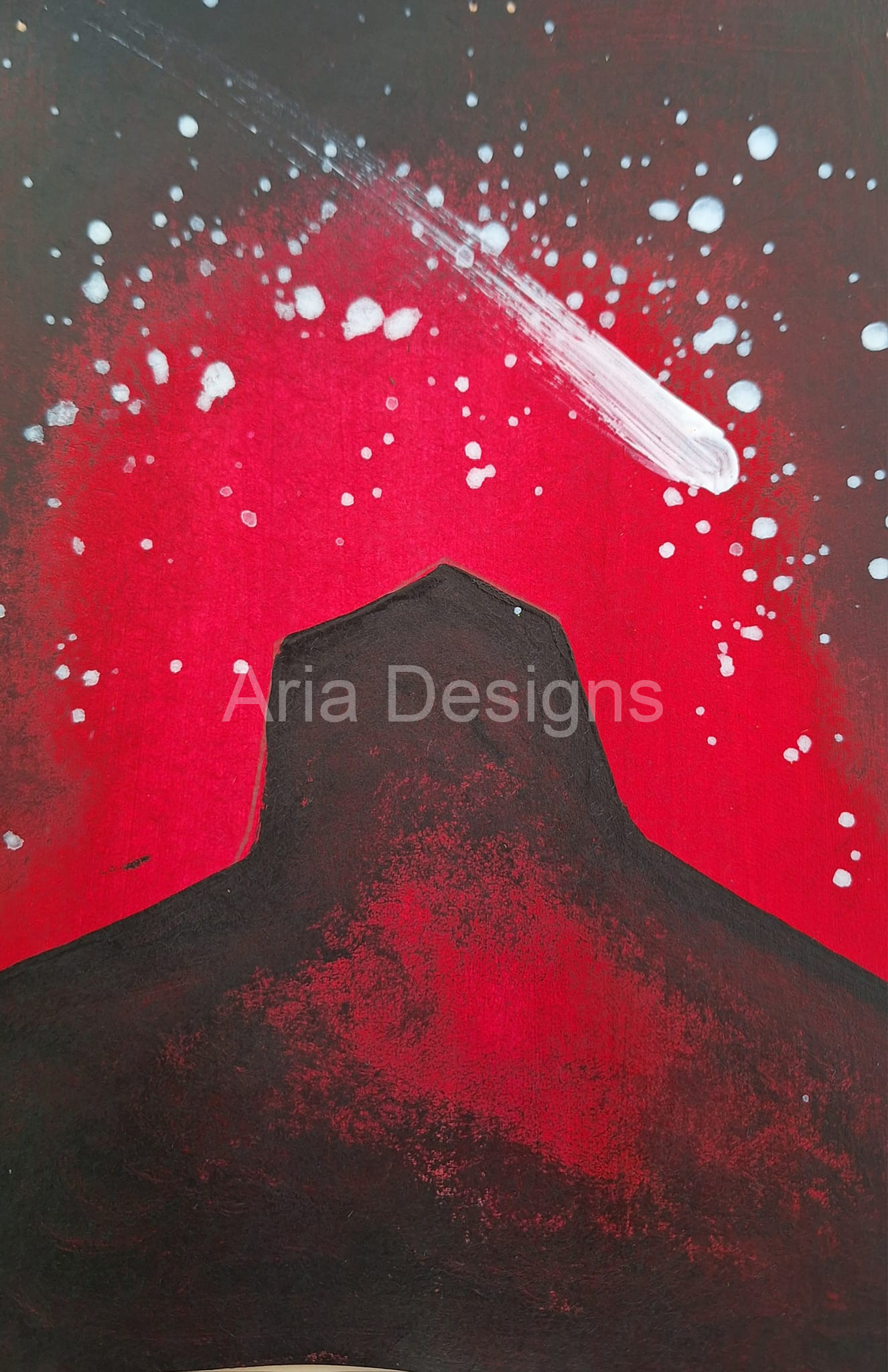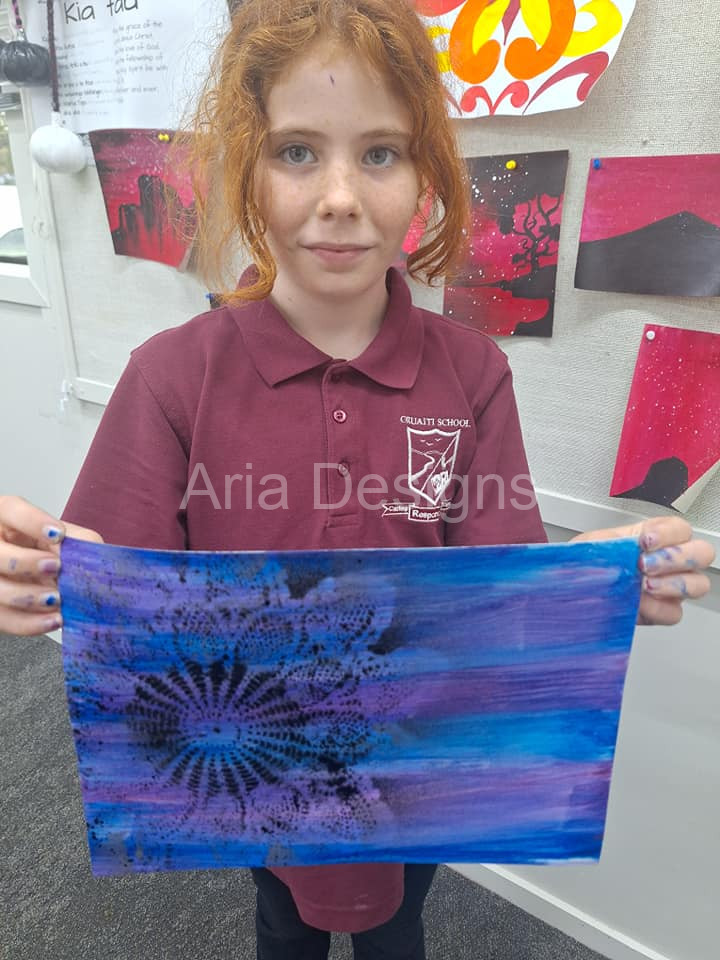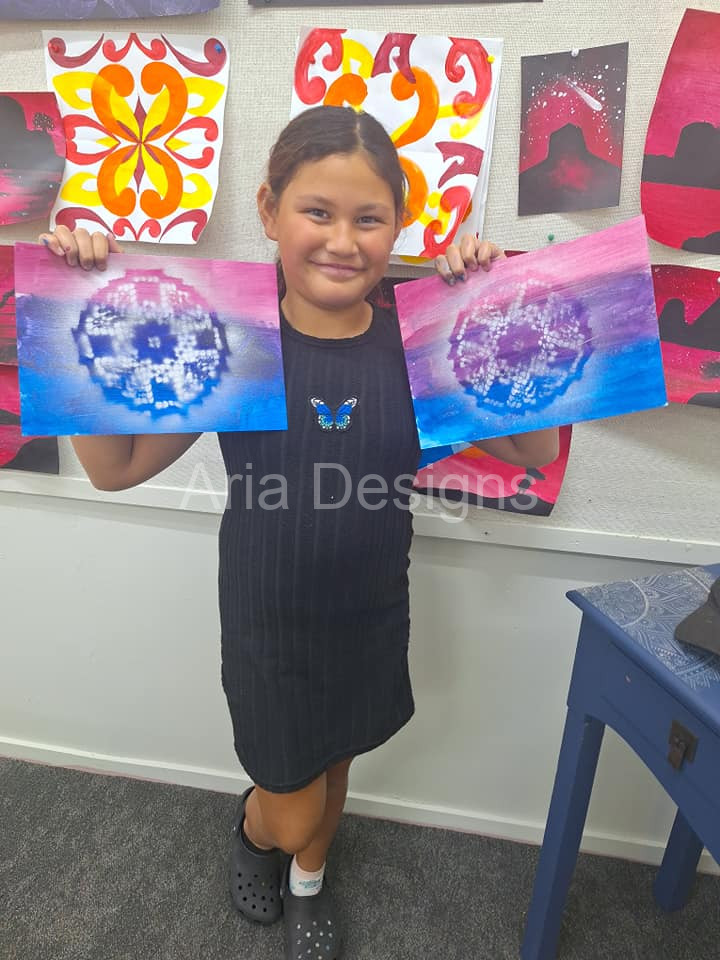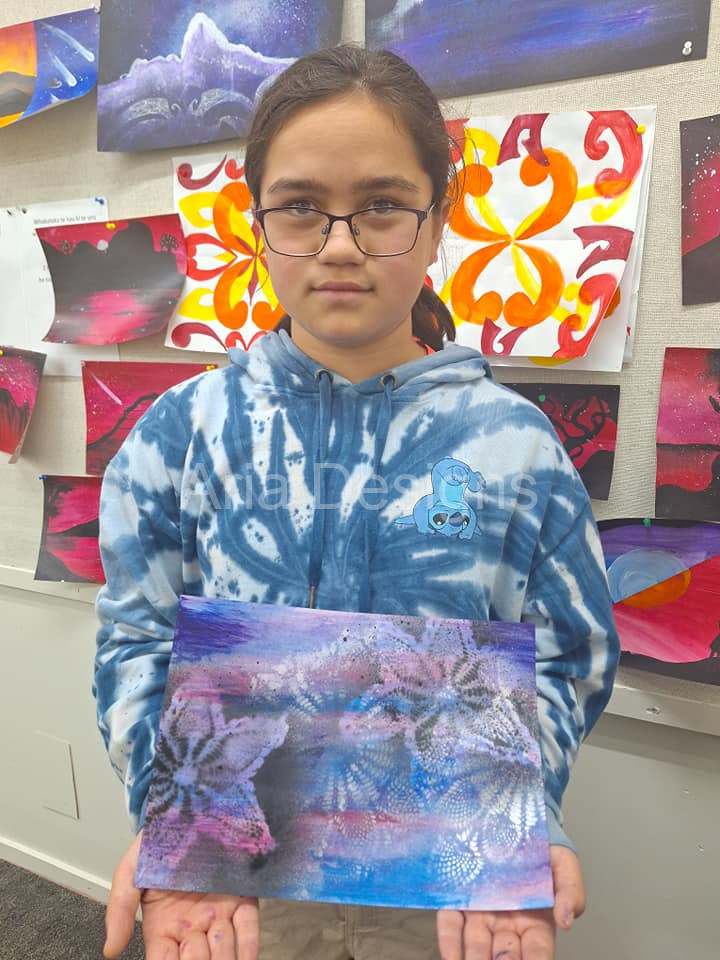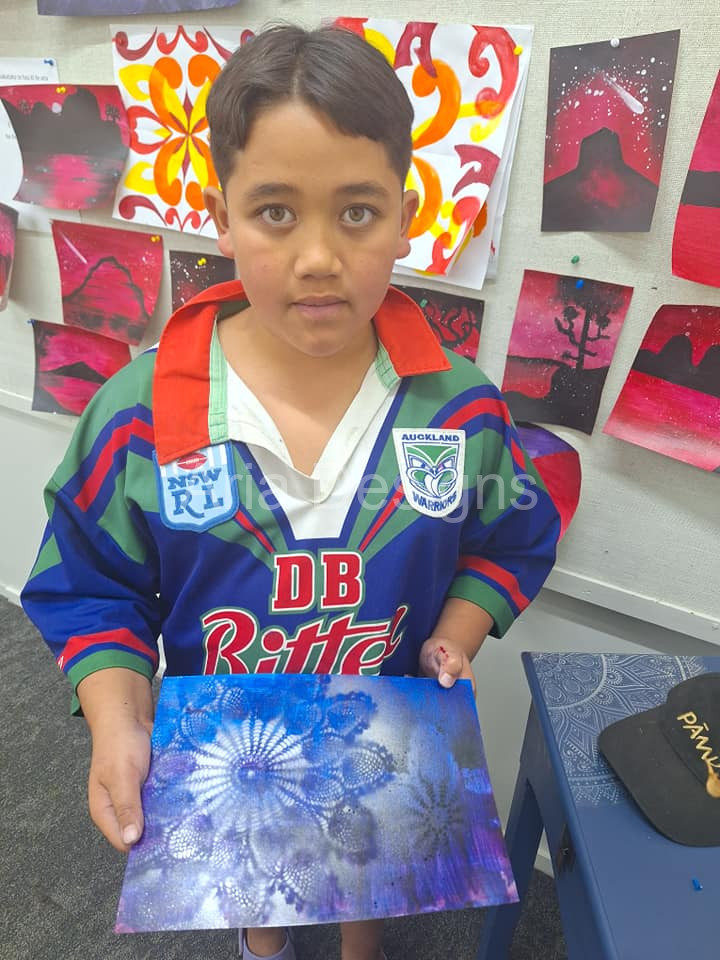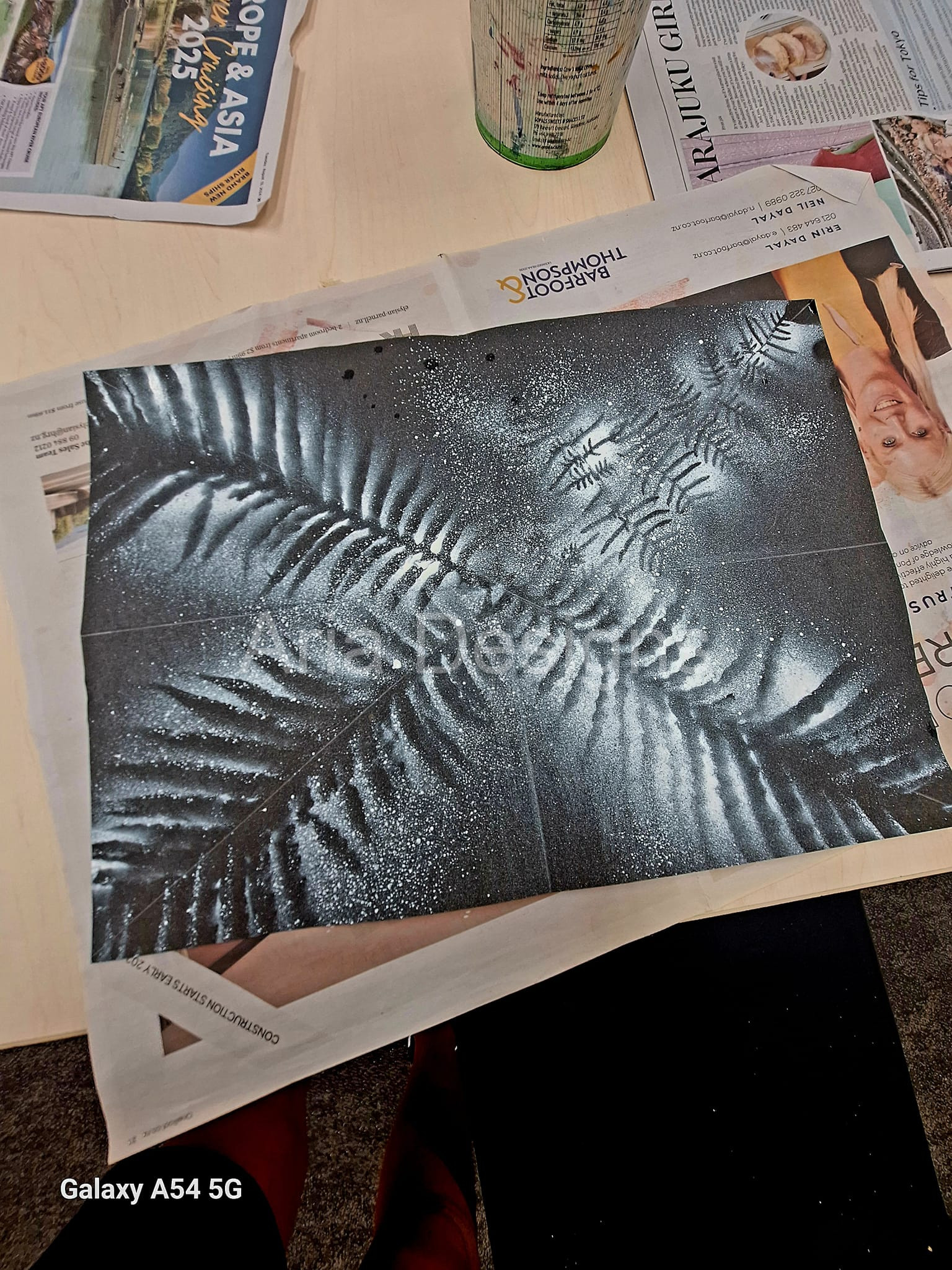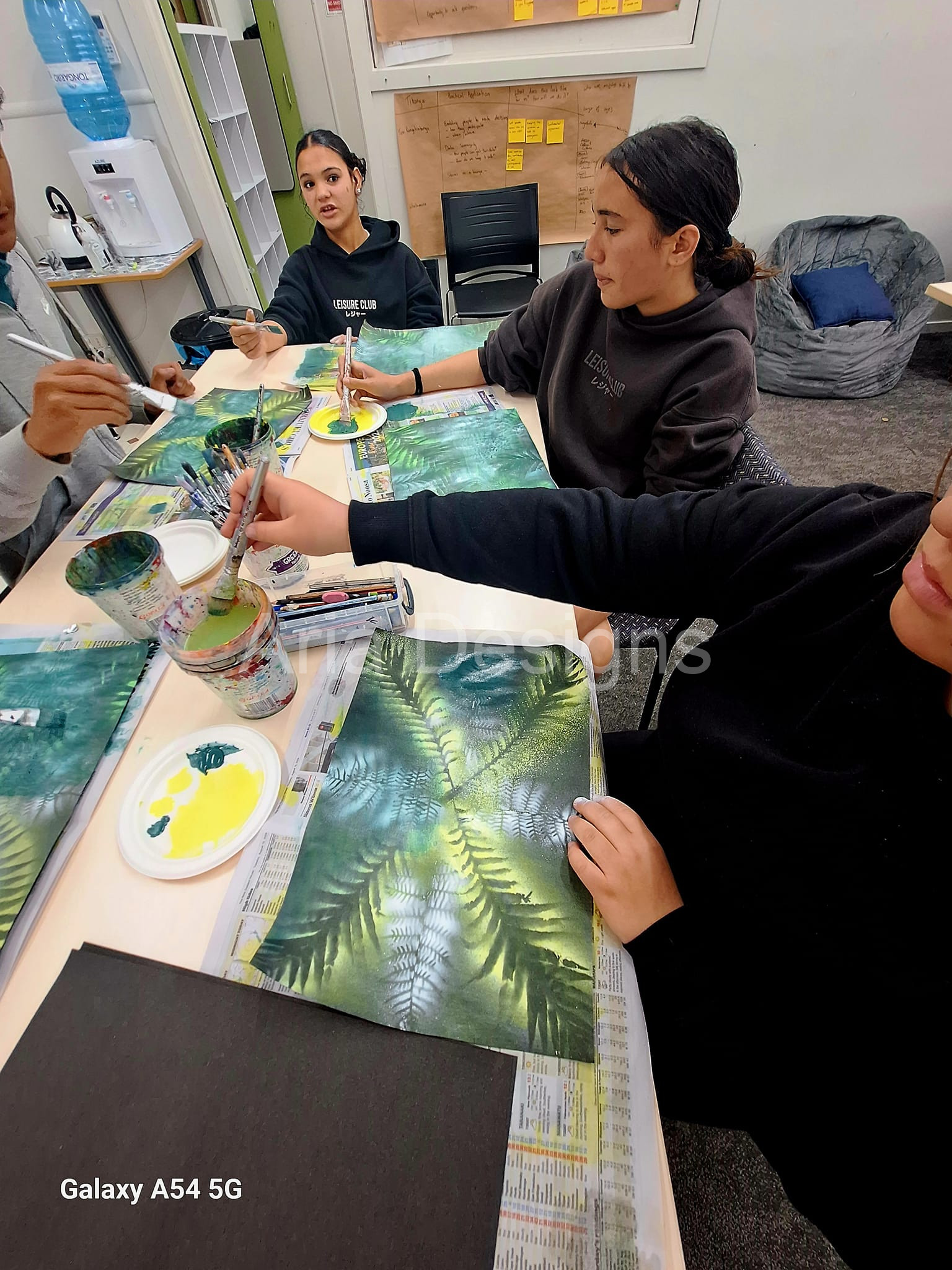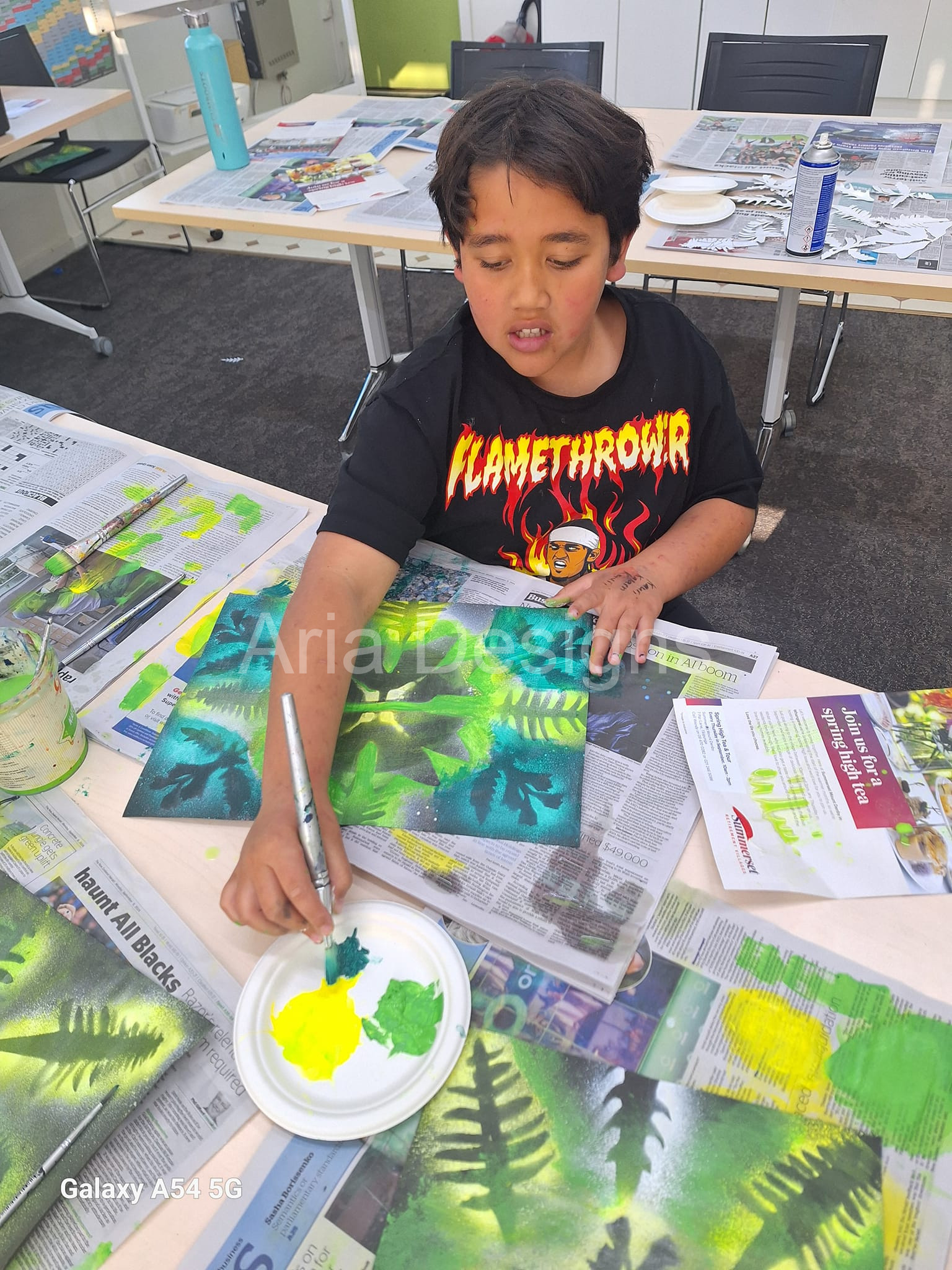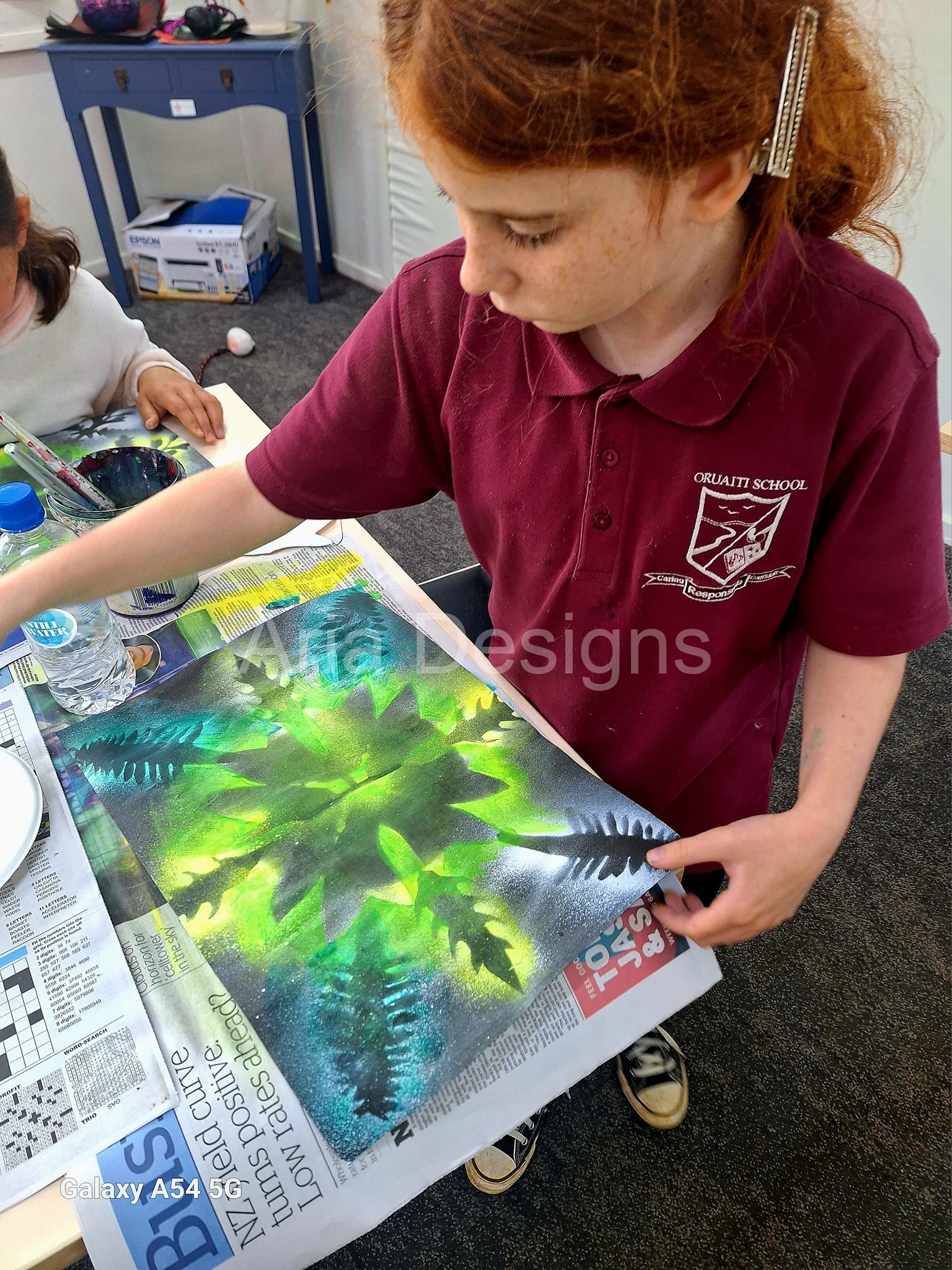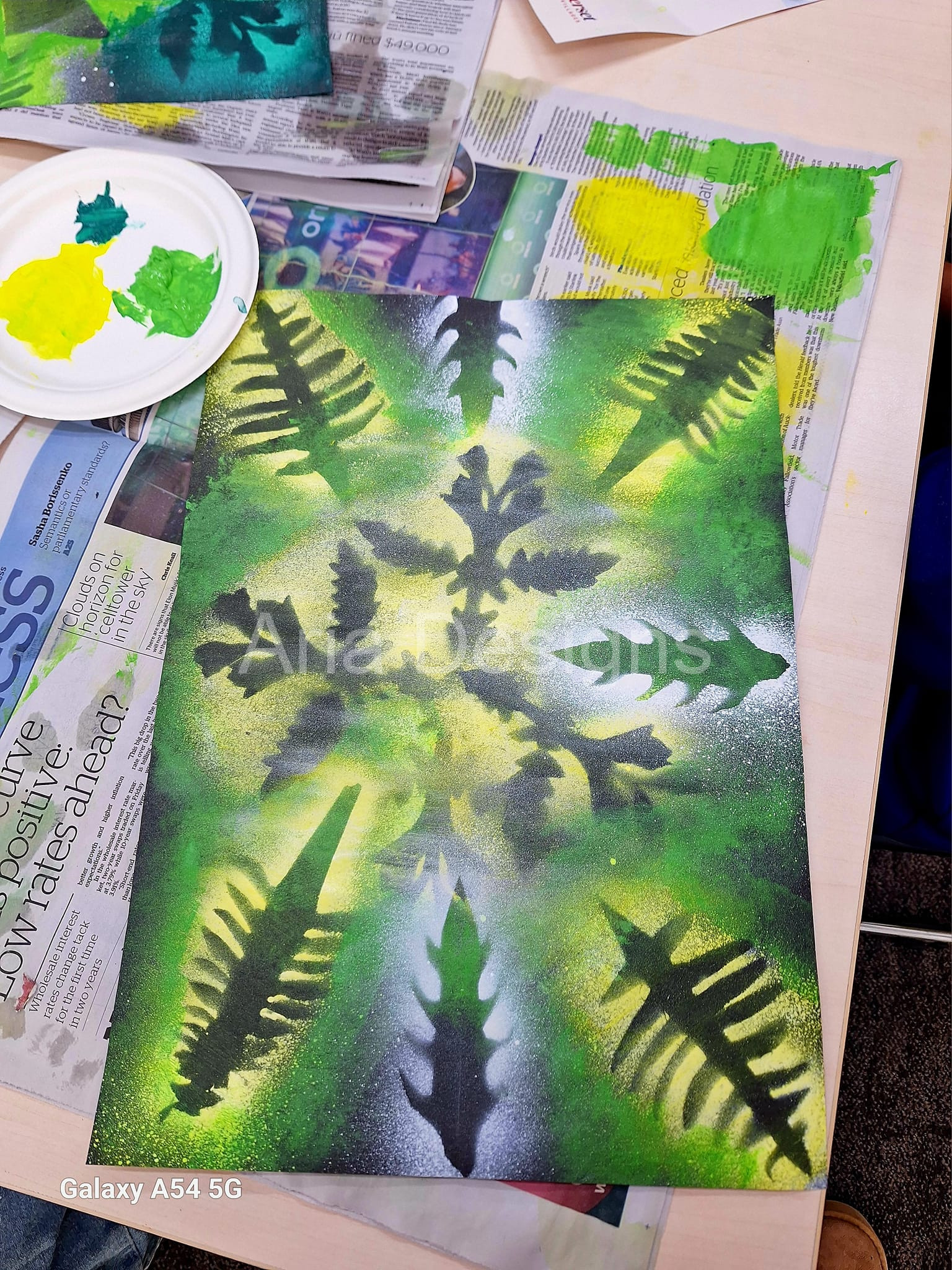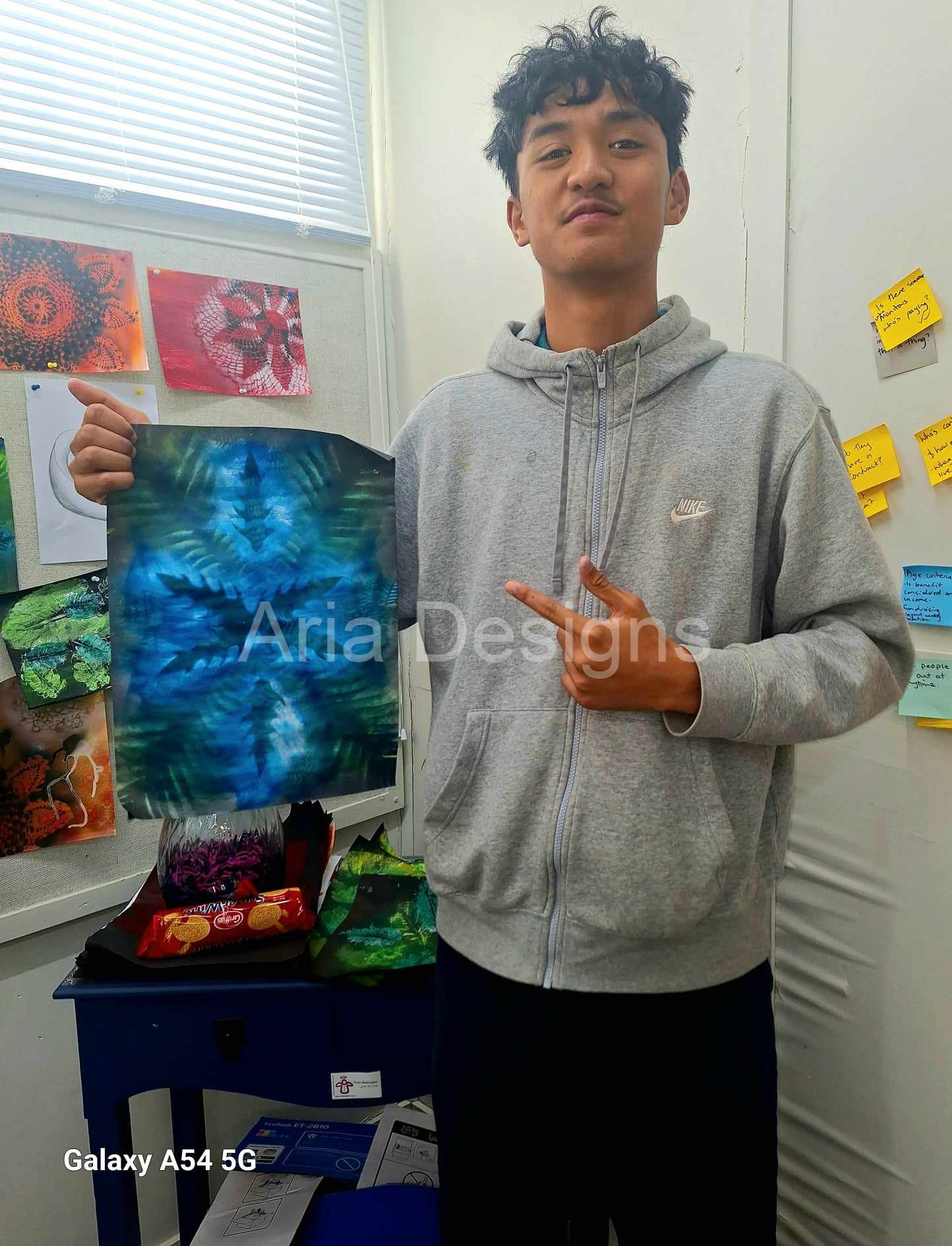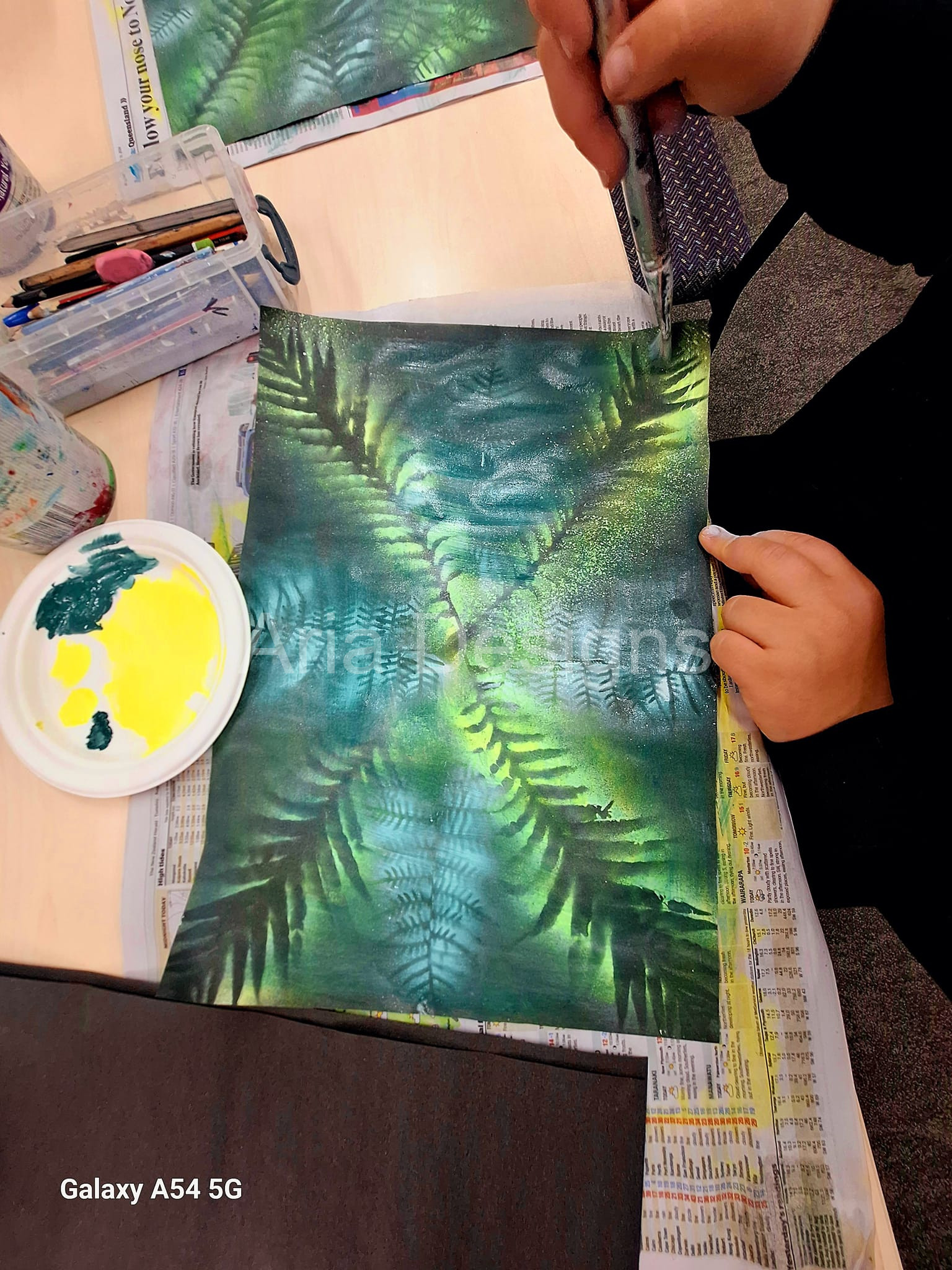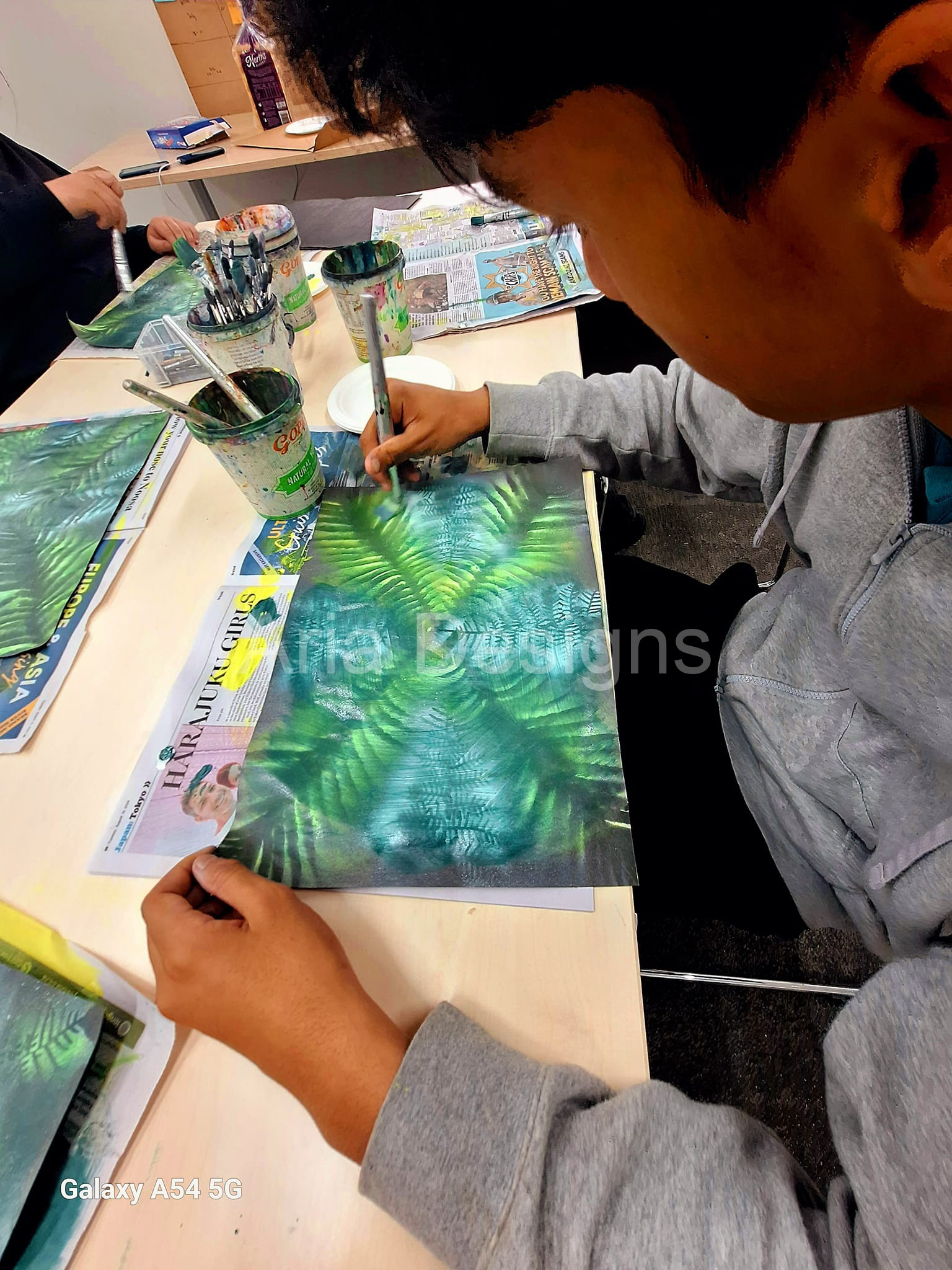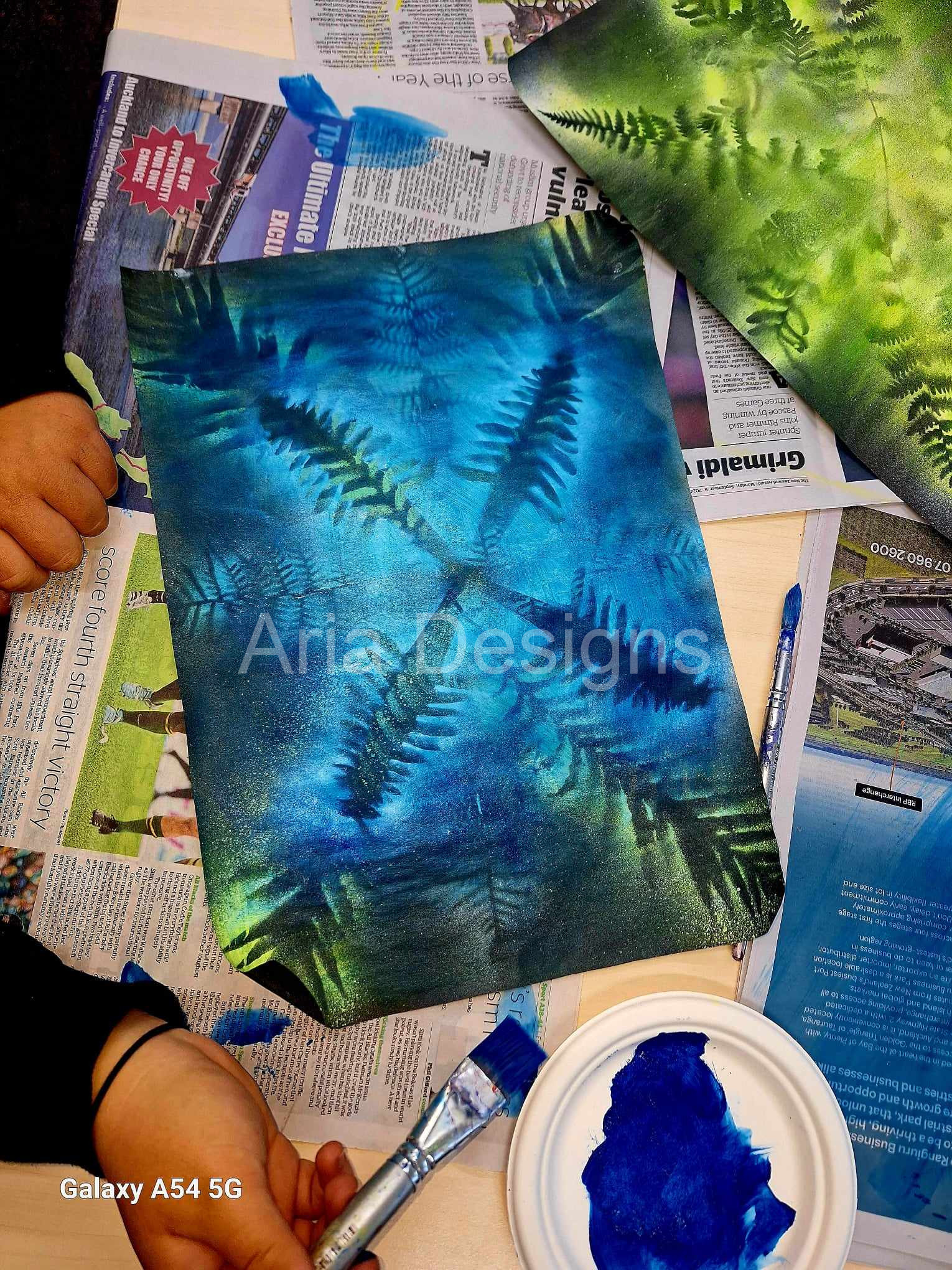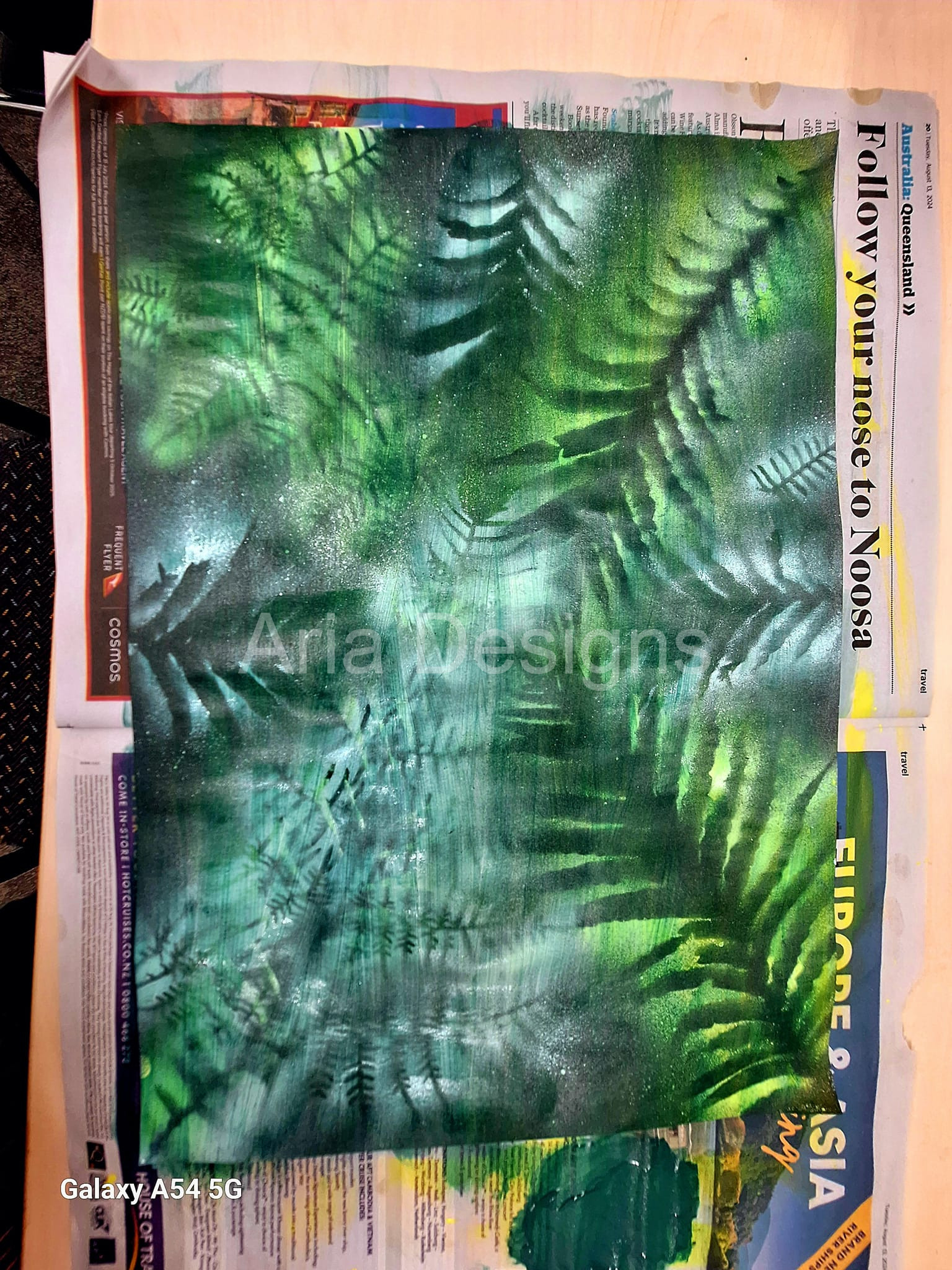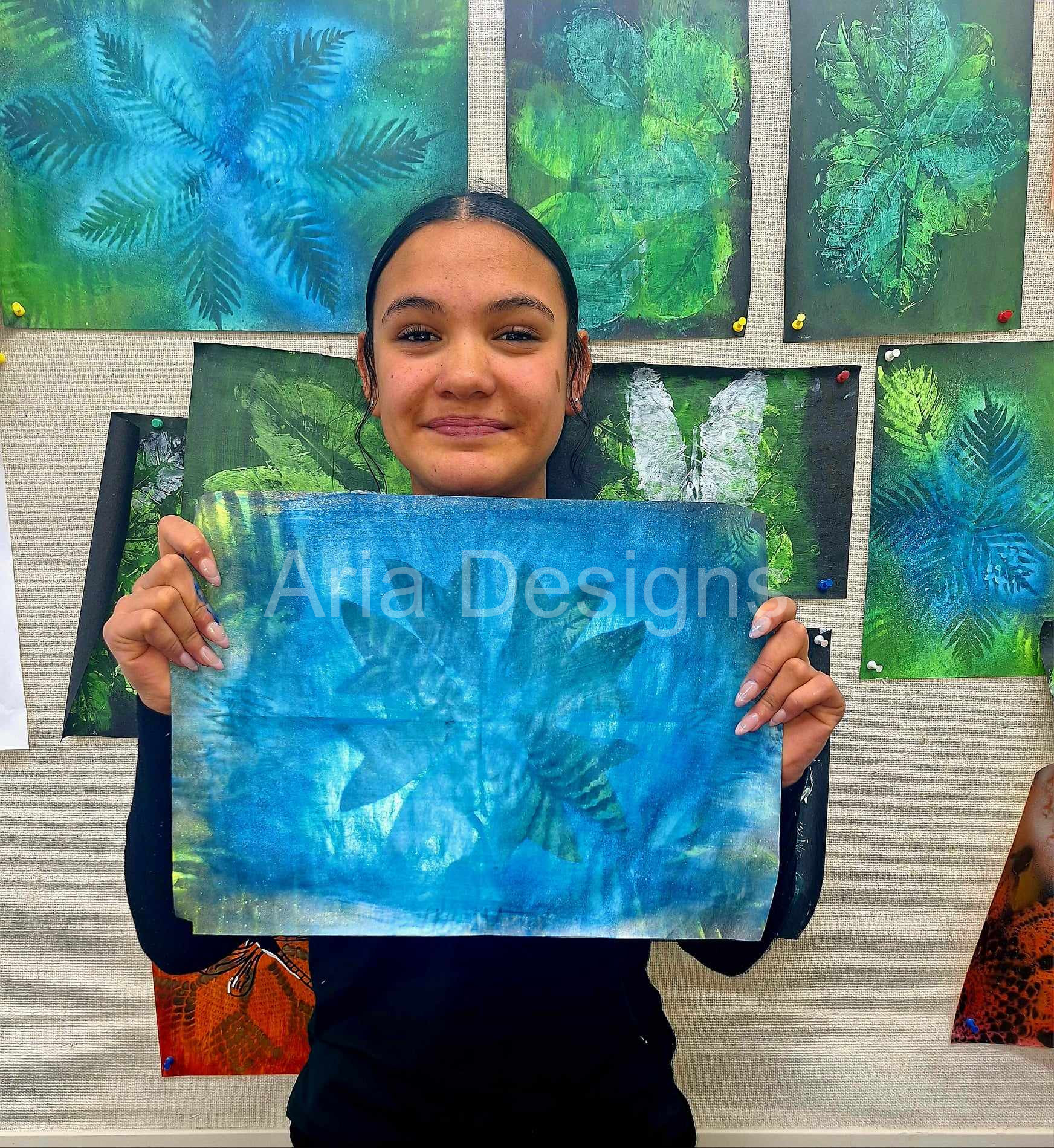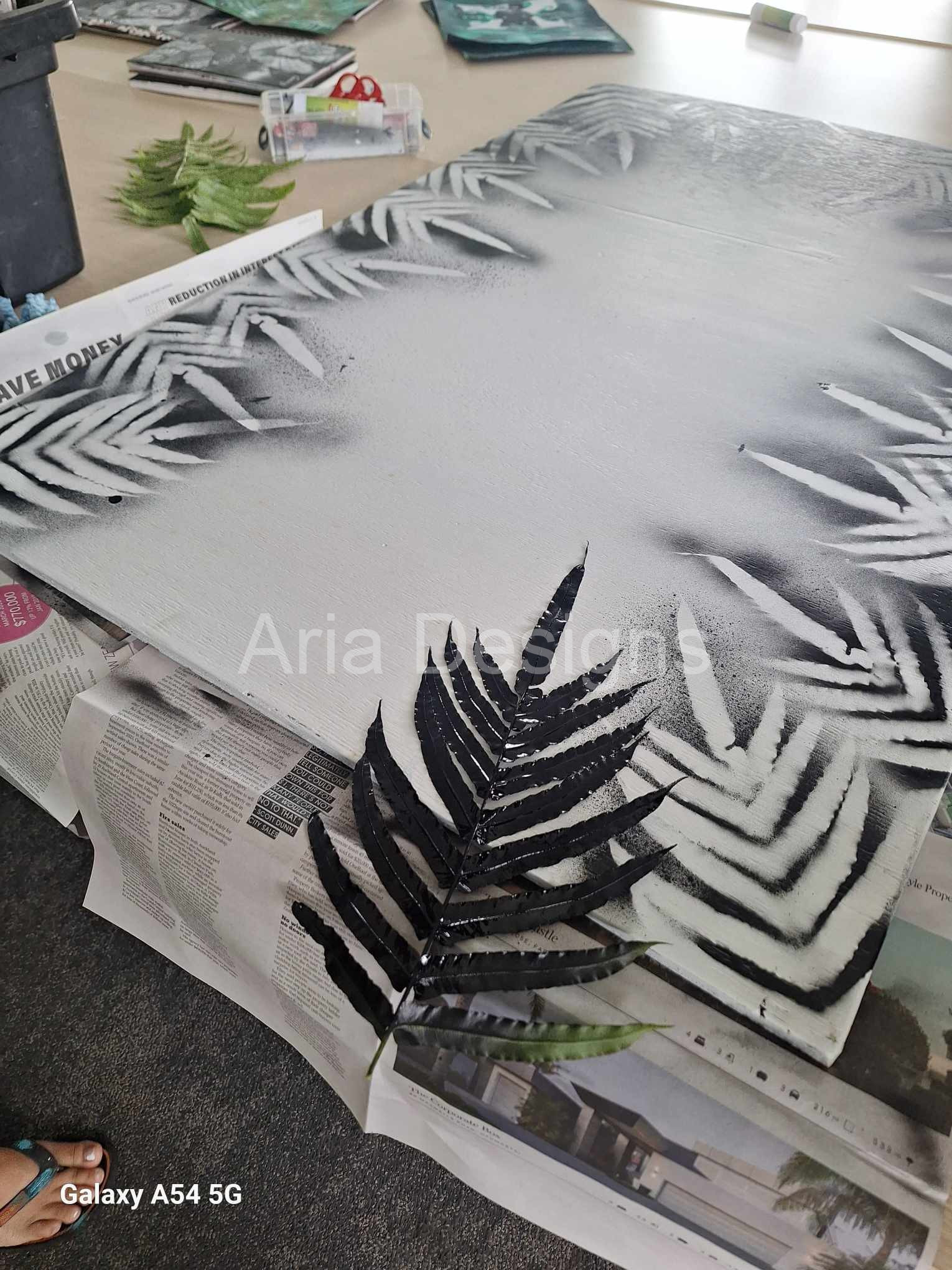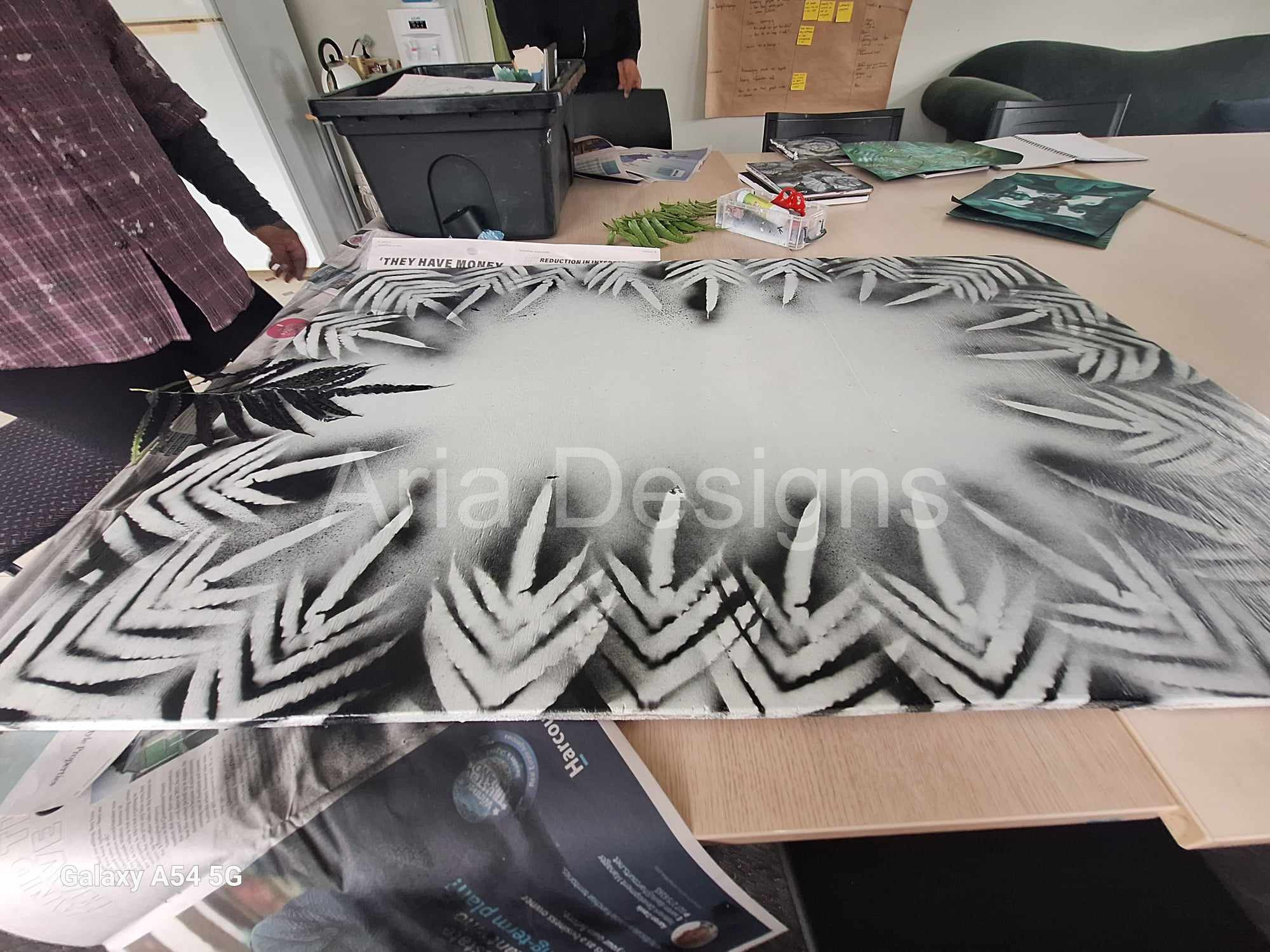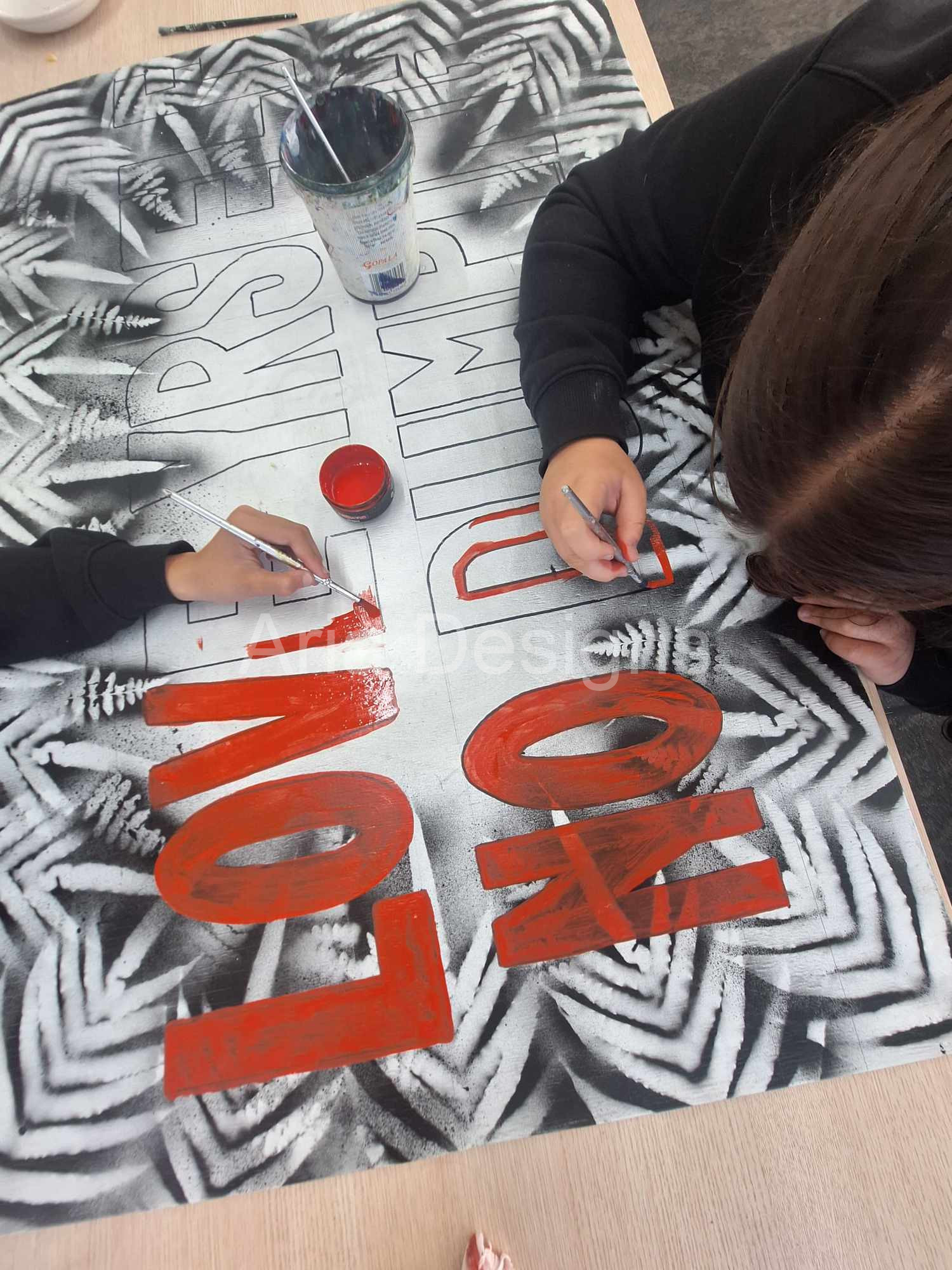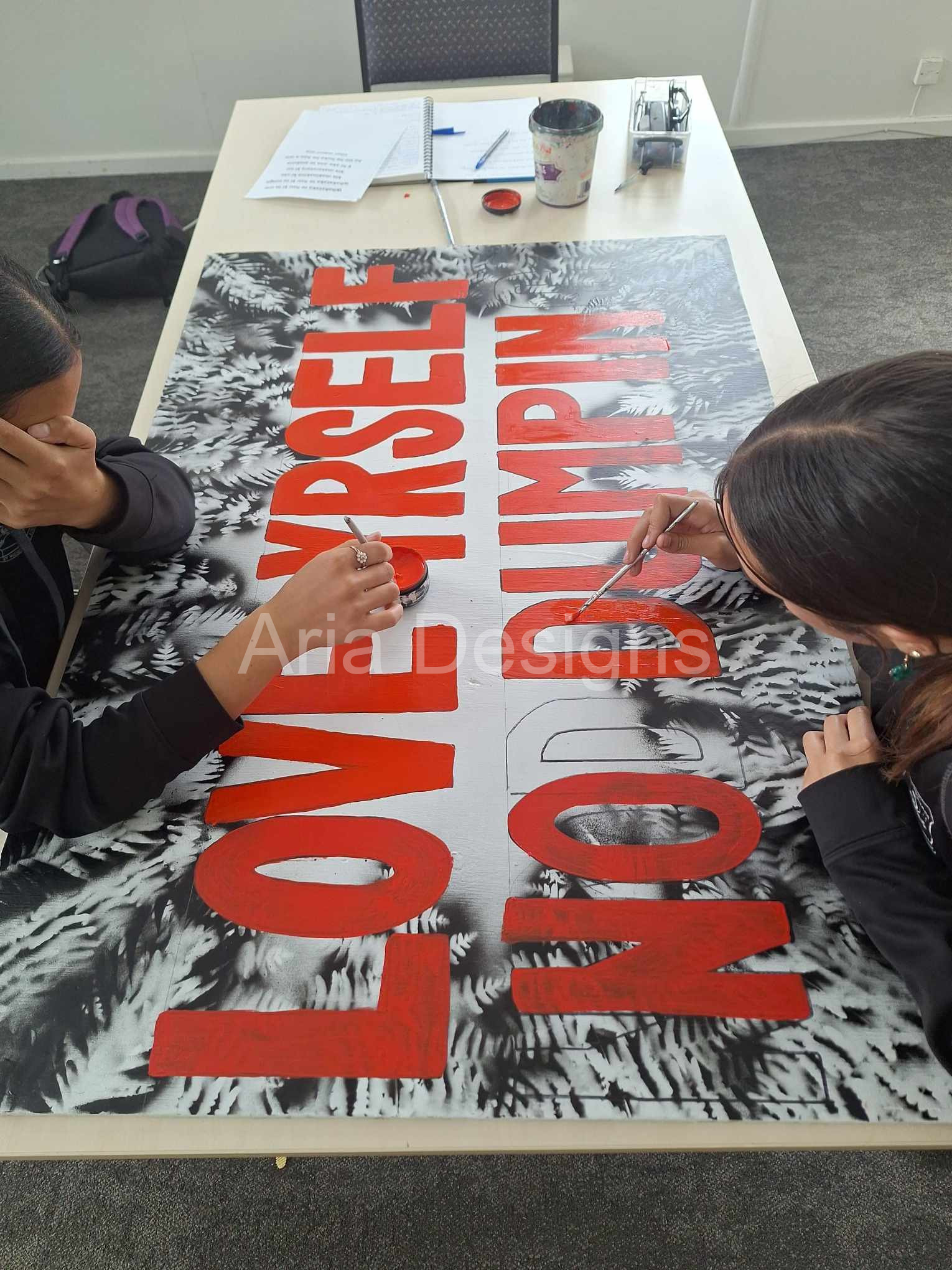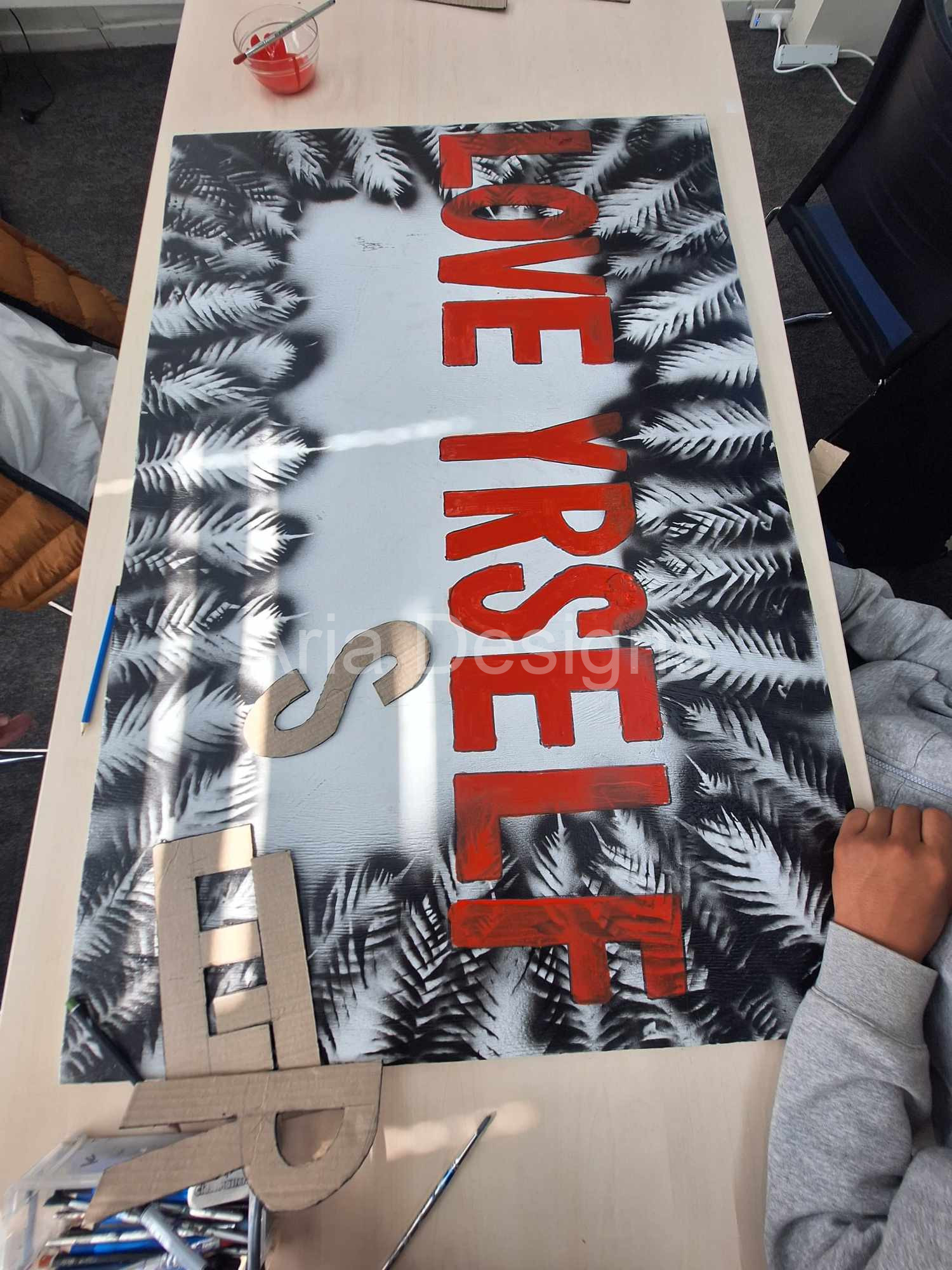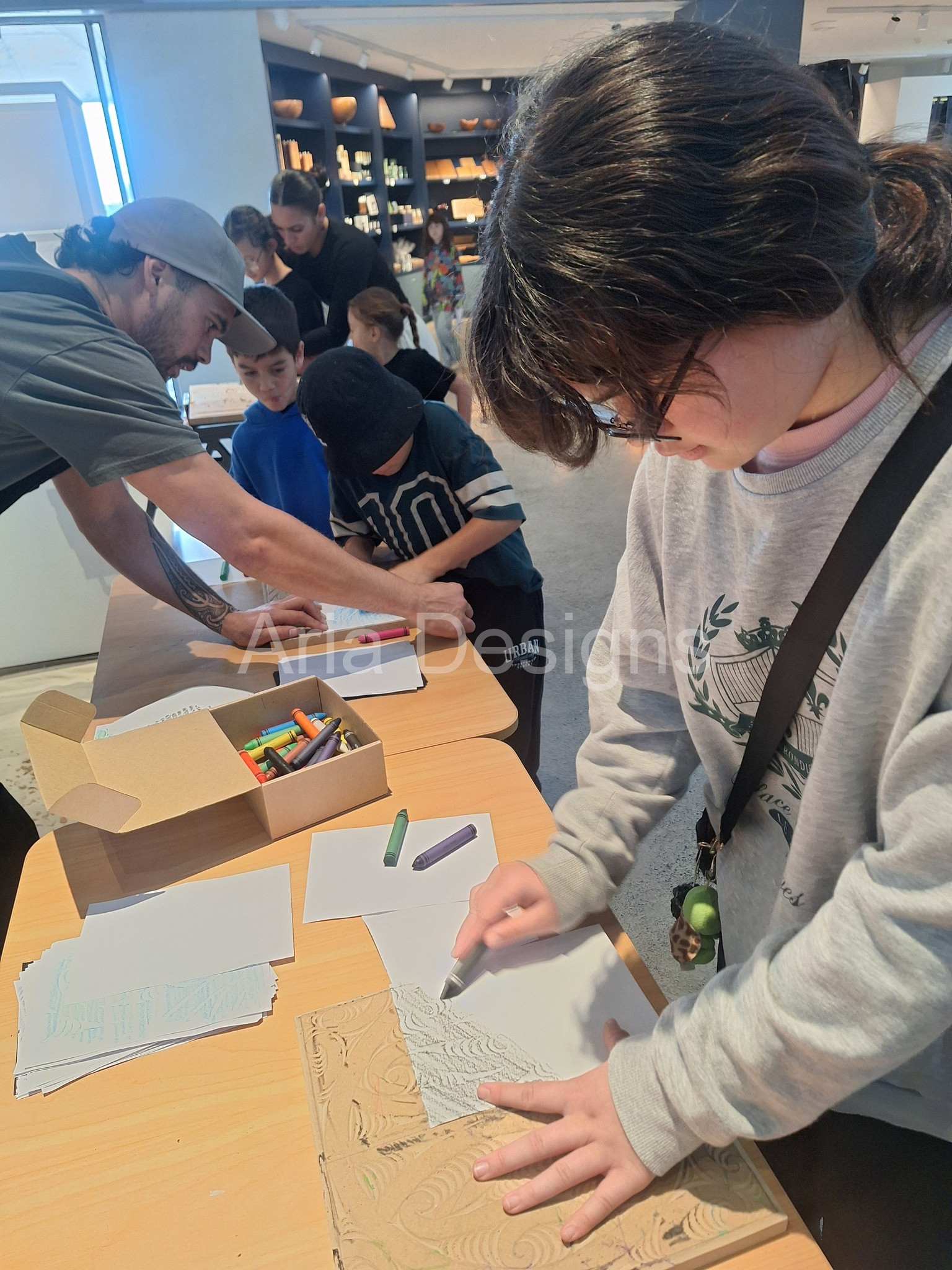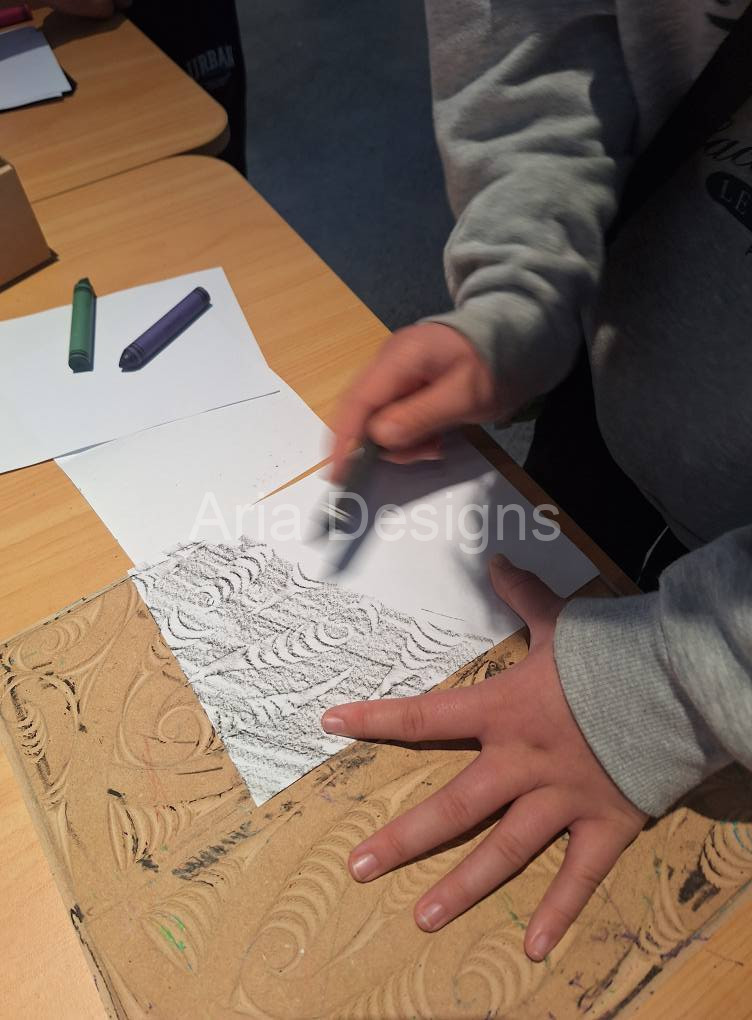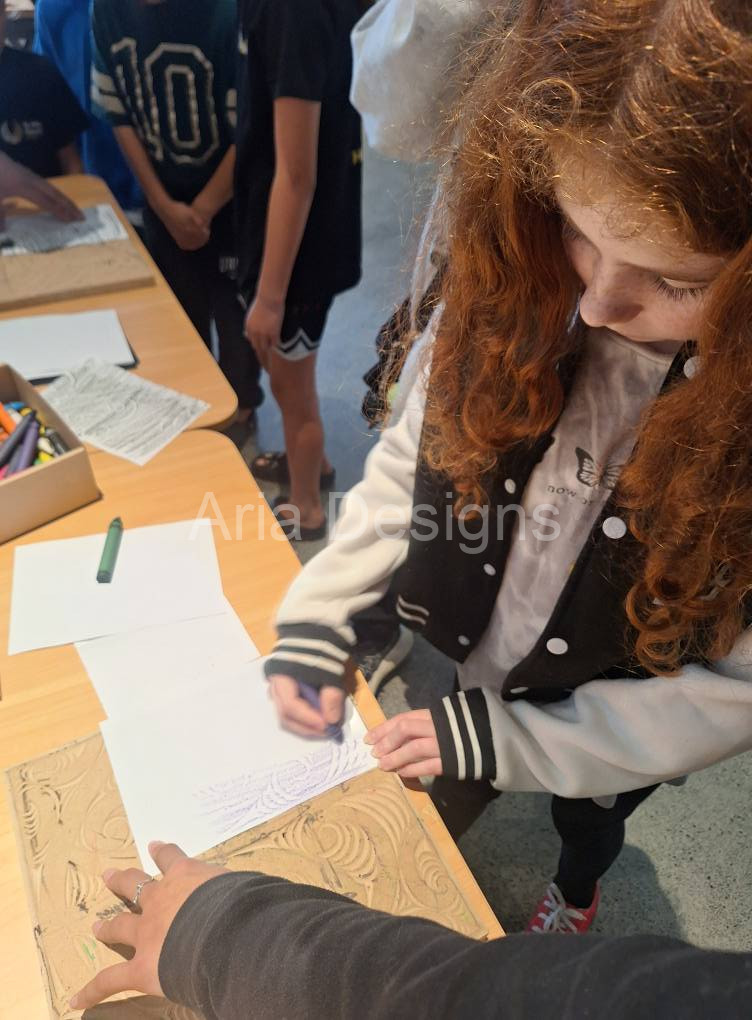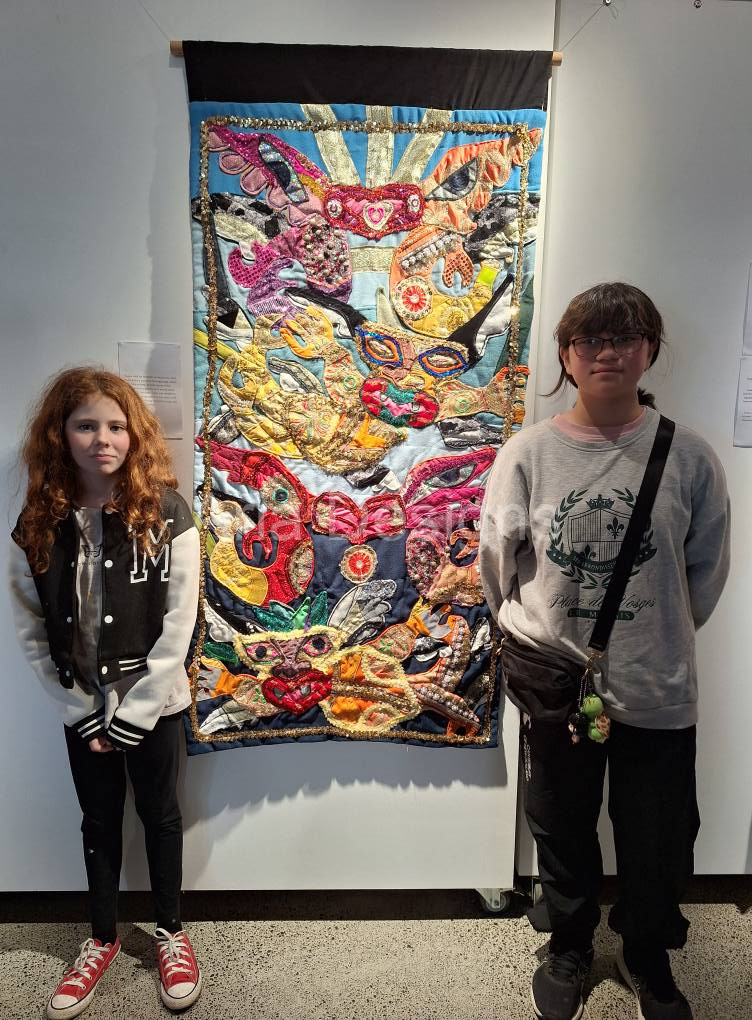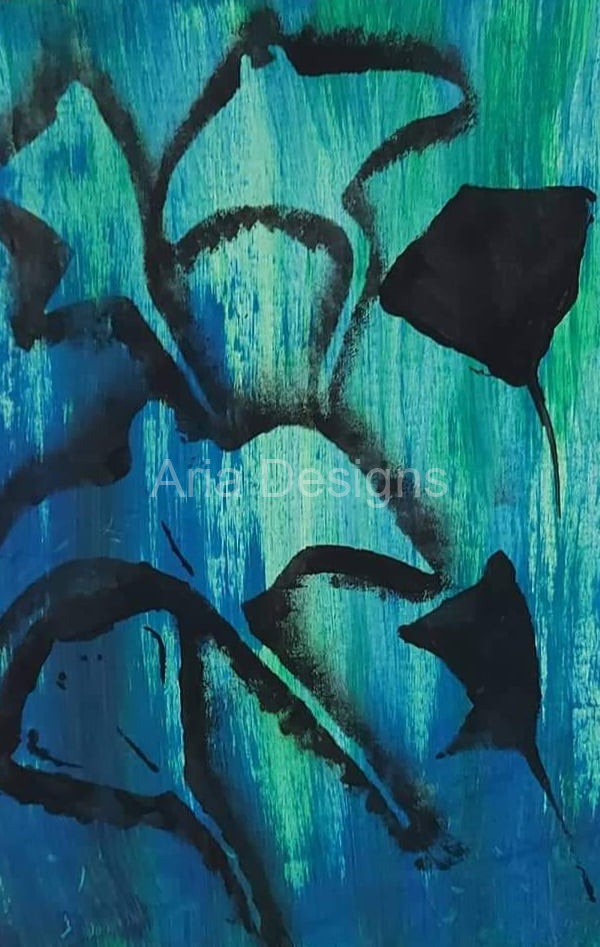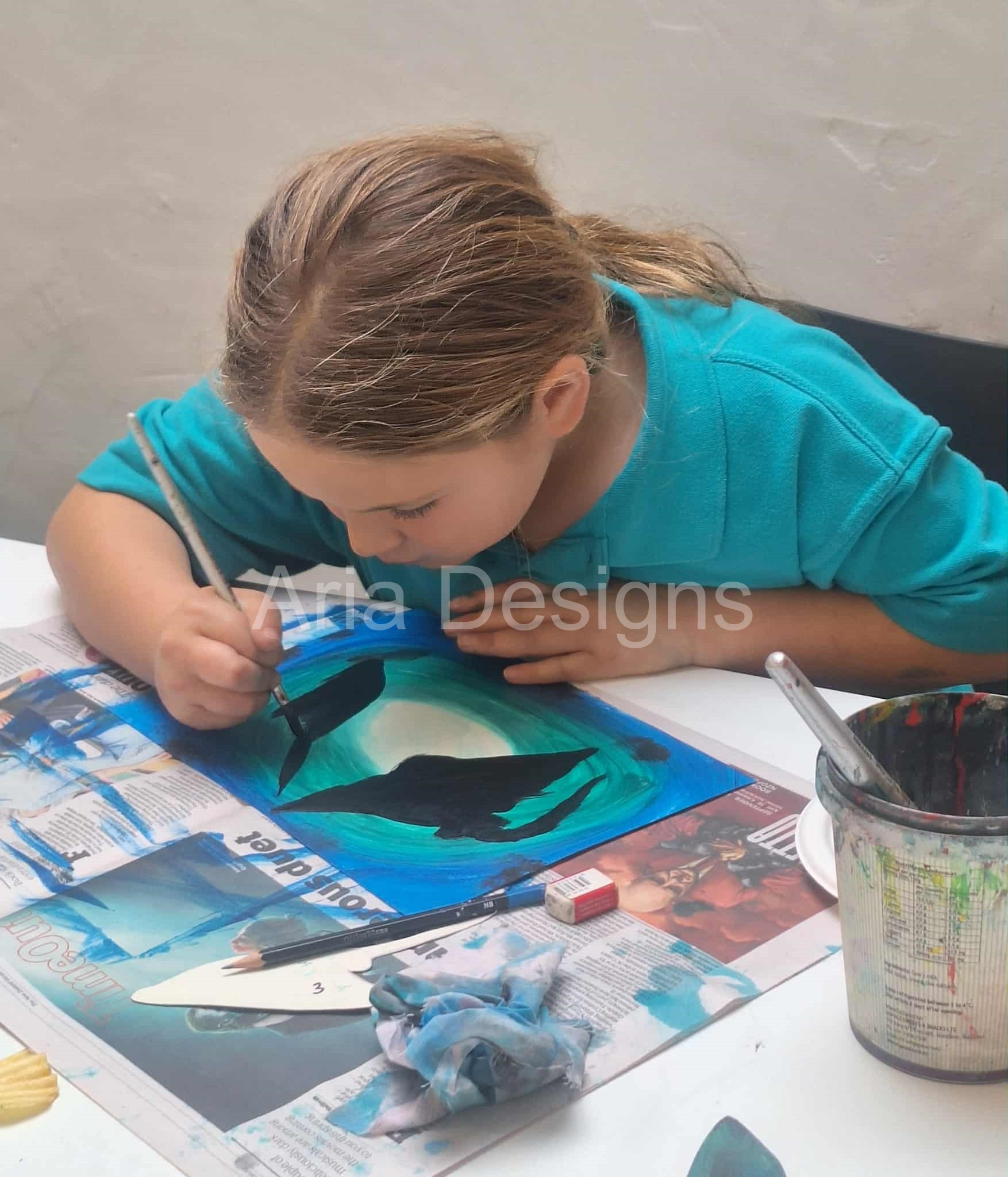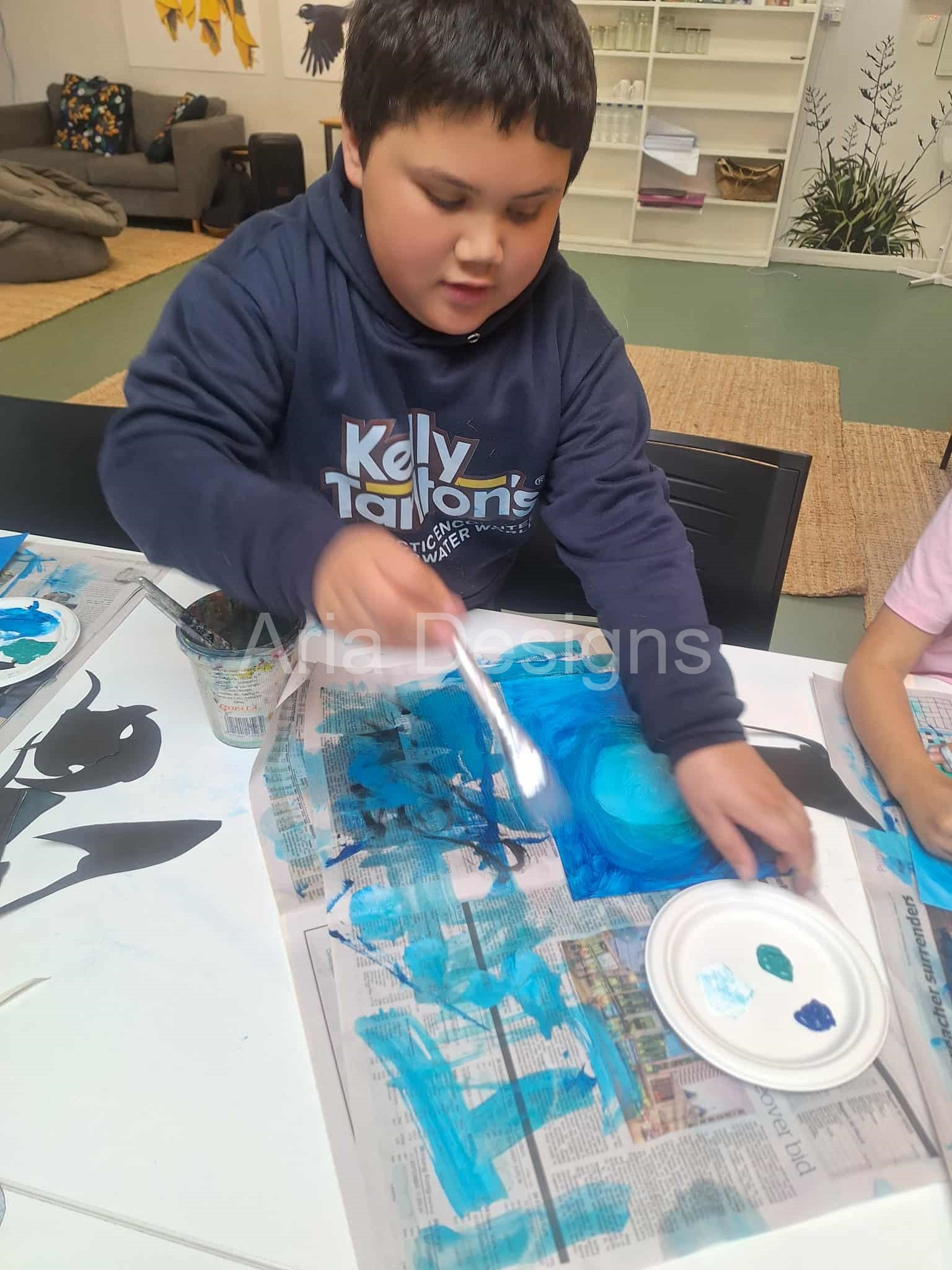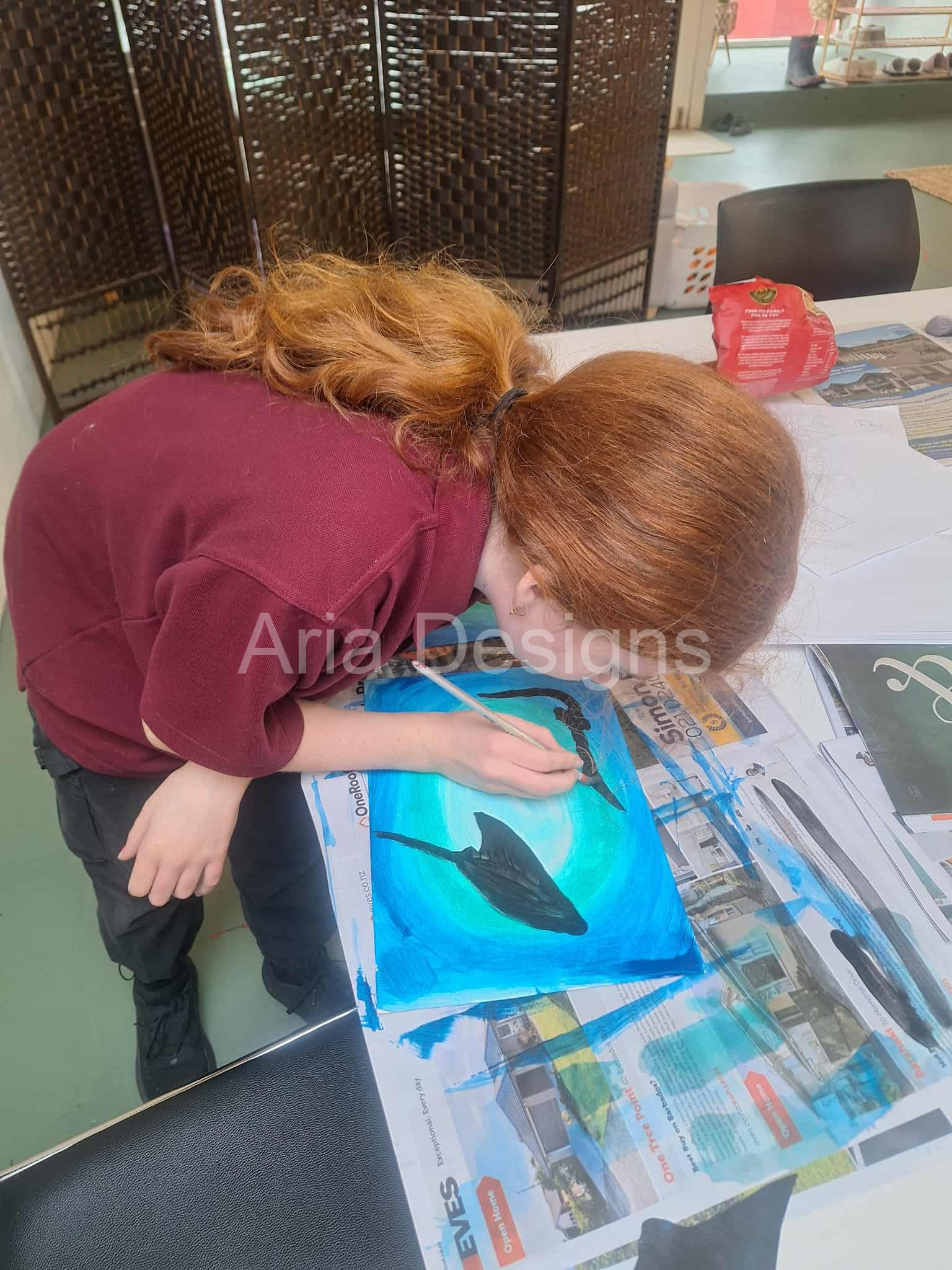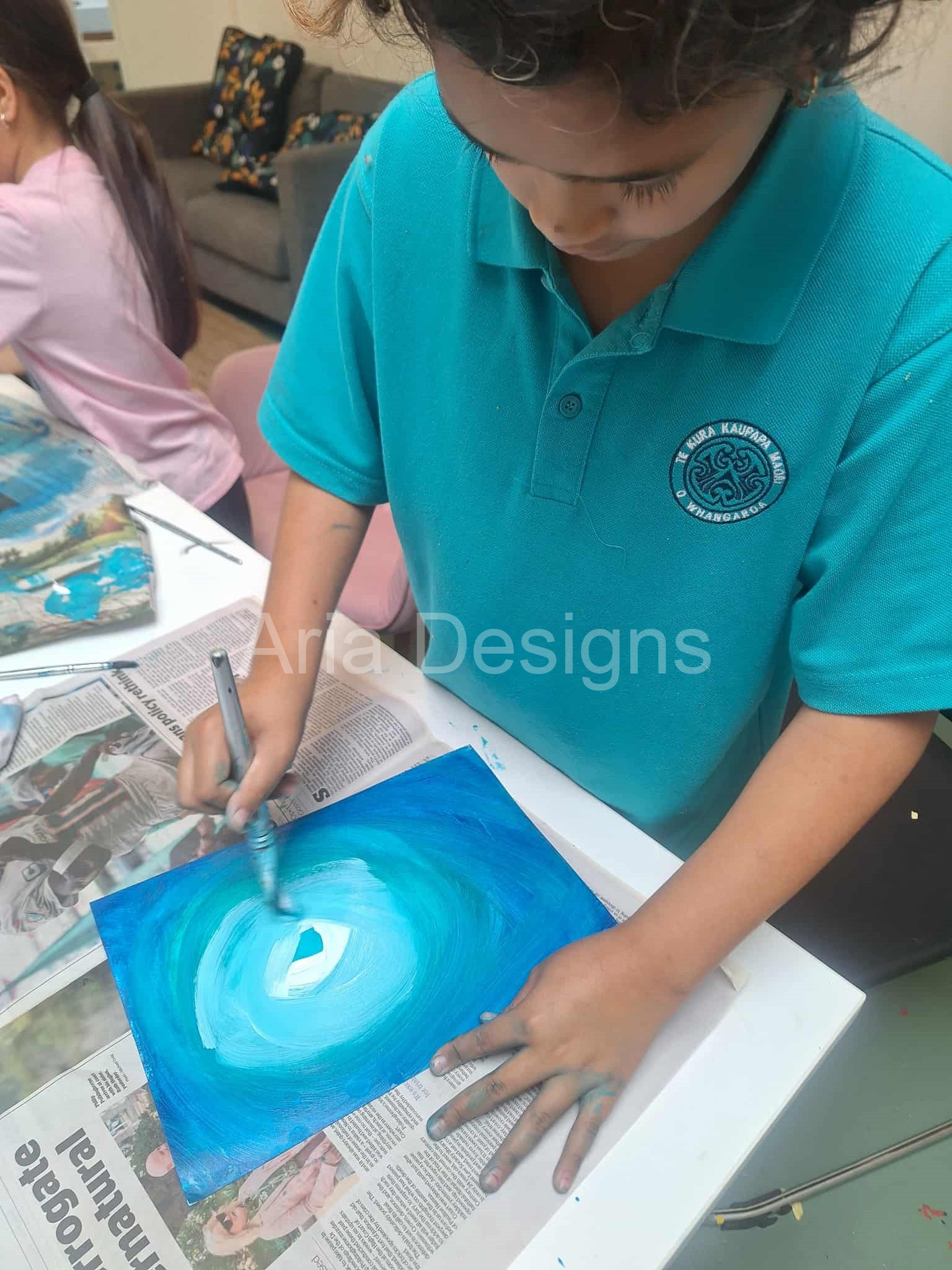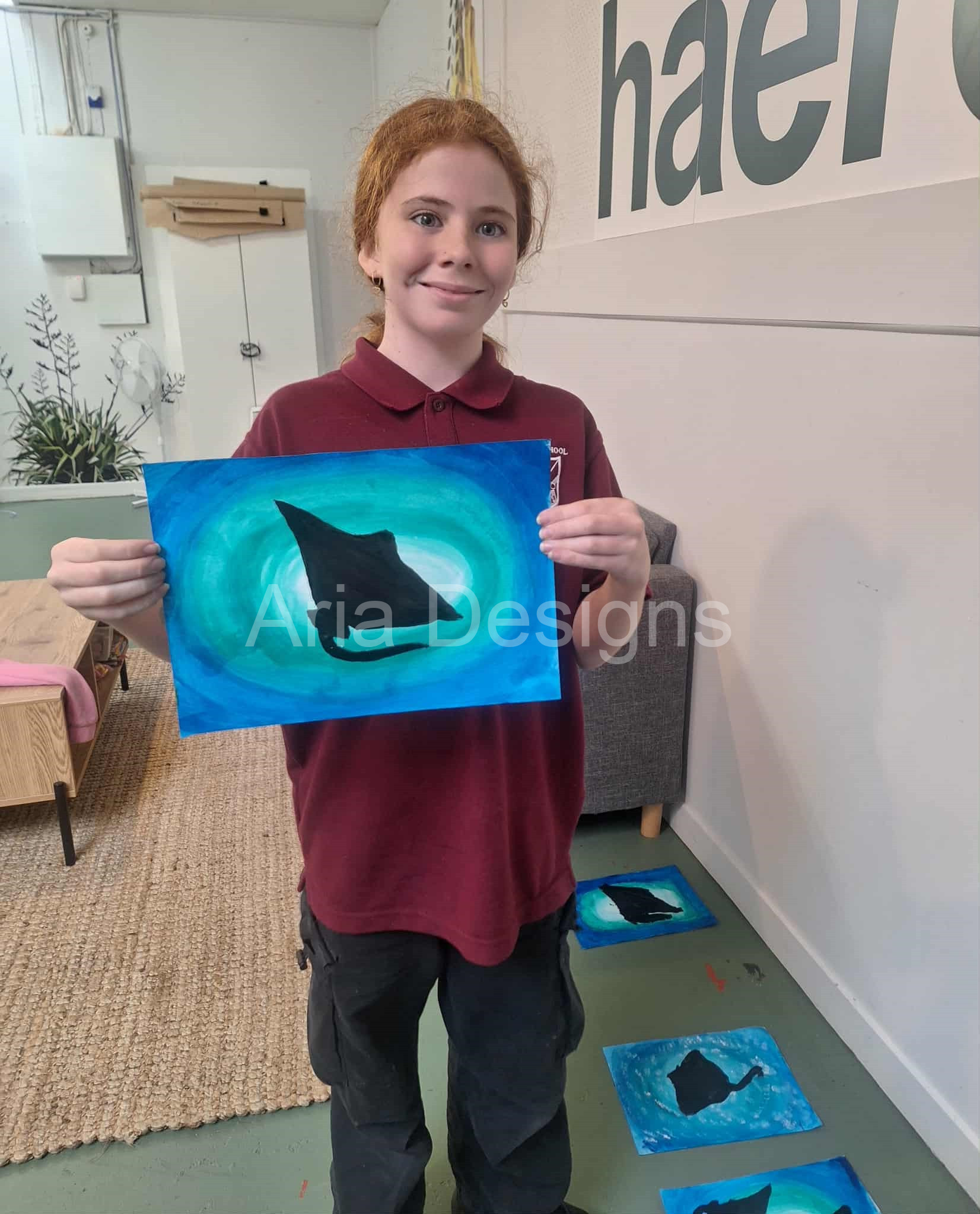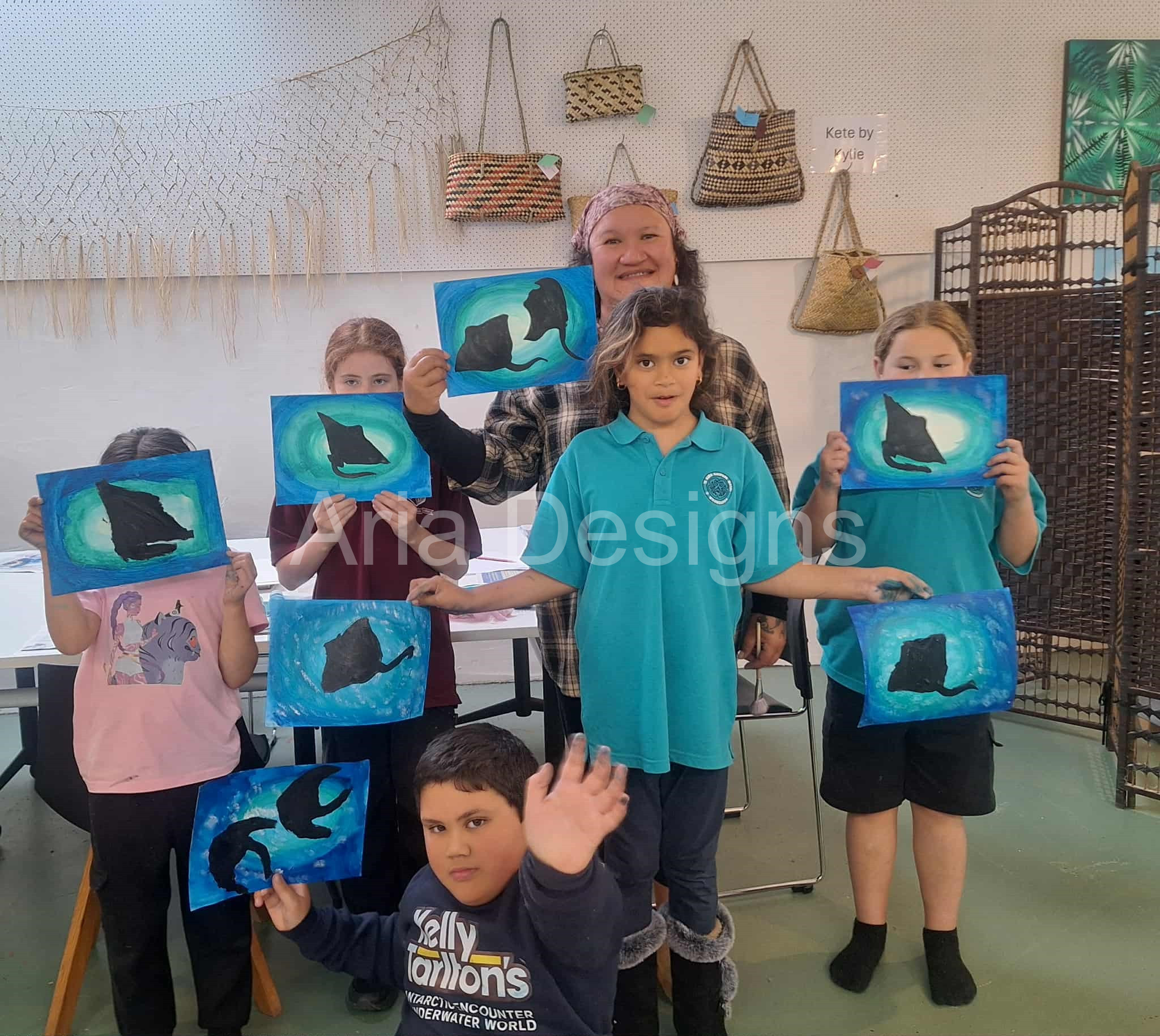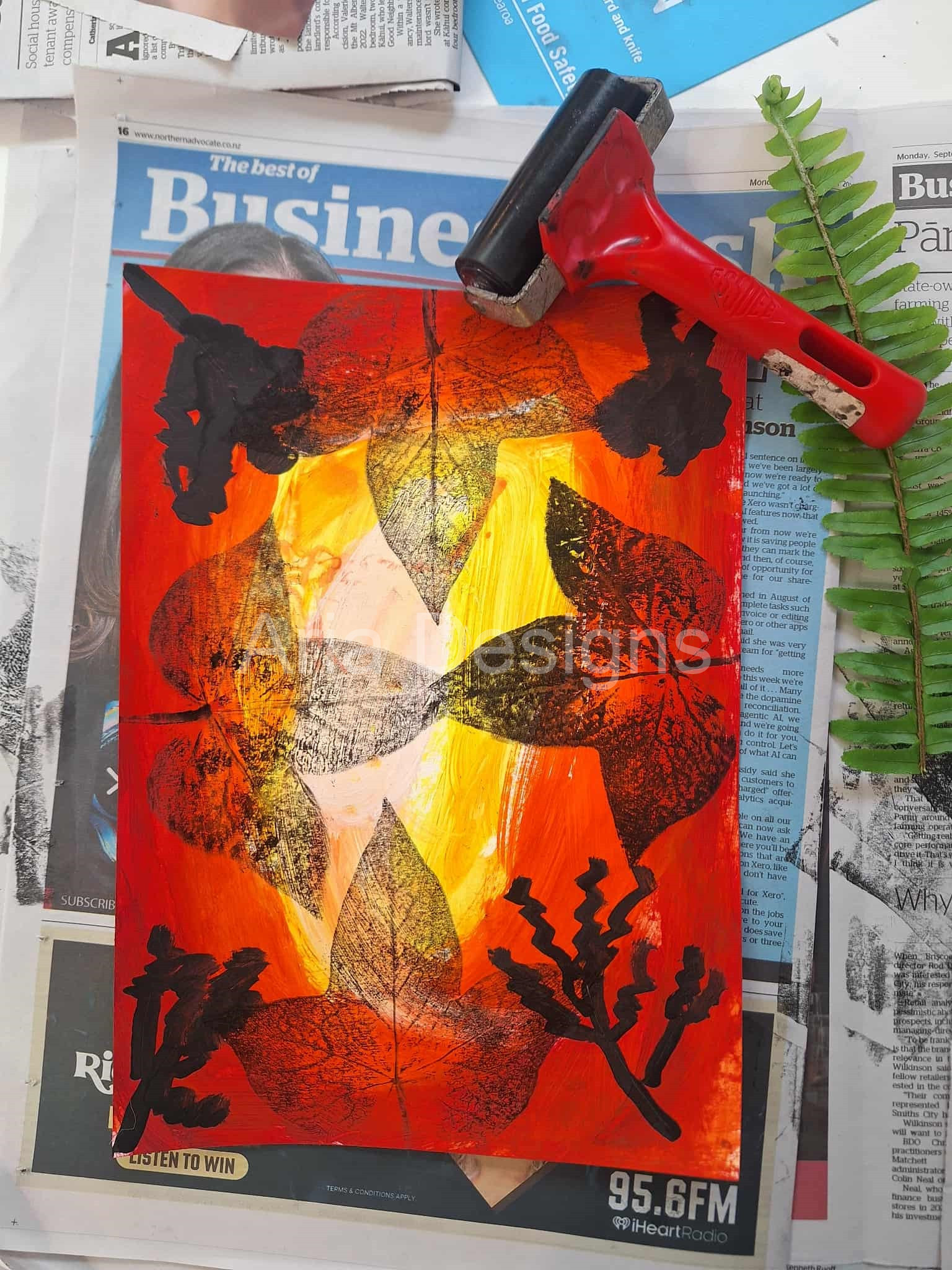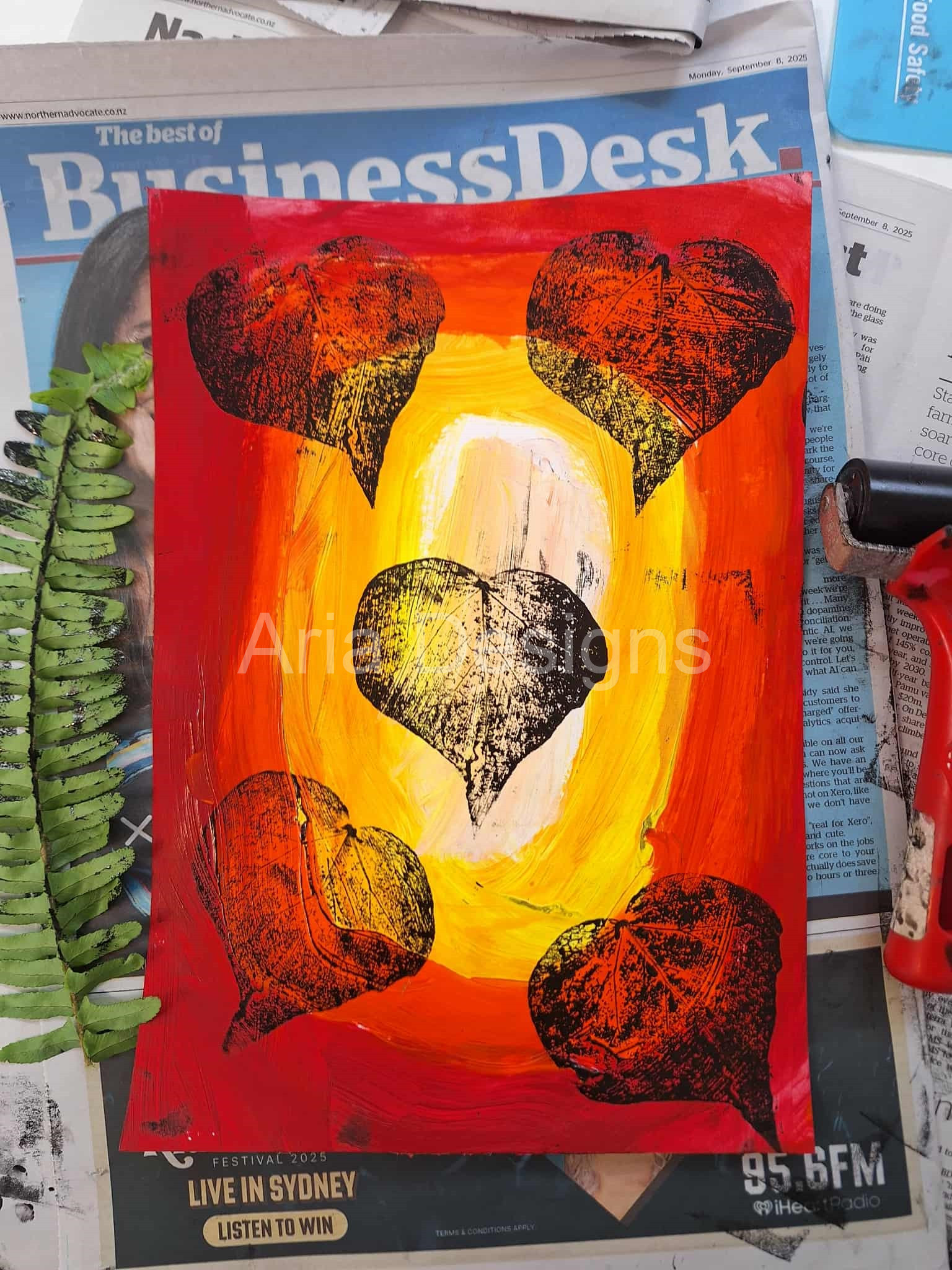Toi Mauri is a restorative Maori Visual Art experience.
Created in response to parents of artistic rangatahi reaching out through the community Facebook page, seeking mentoring to support the emotional, spiritual, mental and physical wellbeing of their rangatahi – through their love of art.
Toi Mauri delivers activities/exercises exploring mixed media eg paint, pencil, pastel, print to express the inner world, the heart of our creative life force and source of self-expression, self-reflection and self-determination.
Toi Mauri began by holding sessions in the Kaeo playground where the kaupapa took root.
A generous local Mauren Paterson, saw us in the park one day and offered us a space at her Eco centre, where Toi Mauri was based for 2 years. This was a welcoming space with the colder months arriving. However, due to covid restrictions in 2020, this space became unavailable, closing its doors to the public.
The Toi Mauri kaupapa was revived after covid, with generous donations from parents keen to have this service returned to their rangatahi – especially after the covid experience. These donations enabled Toi Mauri to hire the Church Hall in Kaeo for a year, becoming financially unsustainable and an alternative space was sought.
In 2022, a space became available with Te Runanga o Whaingaroa and Toi Mauri settled in at the Taratio building in Kaeo for 3 years. In 2025 Te Pokapu Community Hauora hub, also setup by TROW offered Toi Mauri an alternative venue on the main street of Kaeo township. This is where we are based today.
Toi Mauri is grateful for the community support it has continuously received over its developmental stages. This support providing the aspiration to inspire another succession of talented Whangaroa artists.
Toi Mauri 2018 – 2025
Toi Mauri reflects on our Whangaroatanga for creative context, visual content and spiritual connection.
Toi Mauri also aims to equip and encourage our Ranagatahi to participate in community projects, events, exhibitions and festivals by exposing them to a range of visual art disciplines.
Parents supportng their ranagatahi through the Toi Mauri experience are a driving force in keeping this kaupapa alive.
However, due to current social economic pressures, parental support is limited. Therefore, developing funding opportunities to support the Toi Mauri kaupapa is necessary, enabling talented Rangatahi from all walks of life to participate. Last but not least, an opportunity to develop myself professionally.
The long-term goal for Toi Mauri is to build an artist Studio/workshop on whanau whenua at Pupuke for the purpose of workshops, exhibitions, holiday programmes and wananga.
